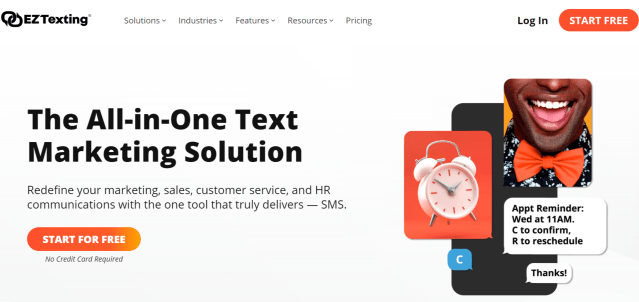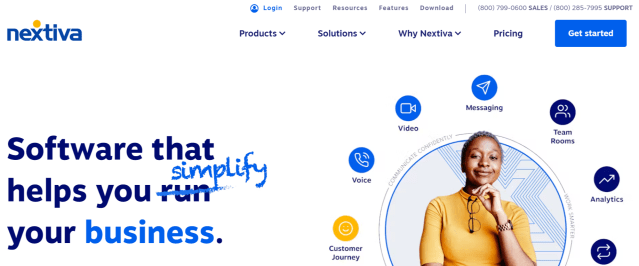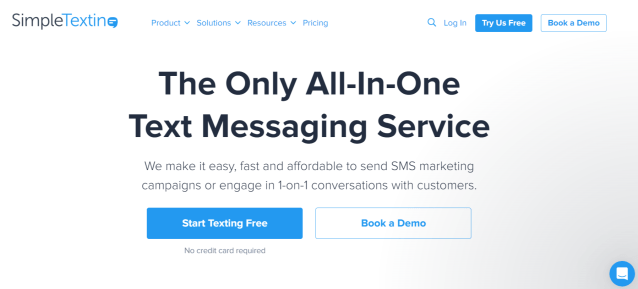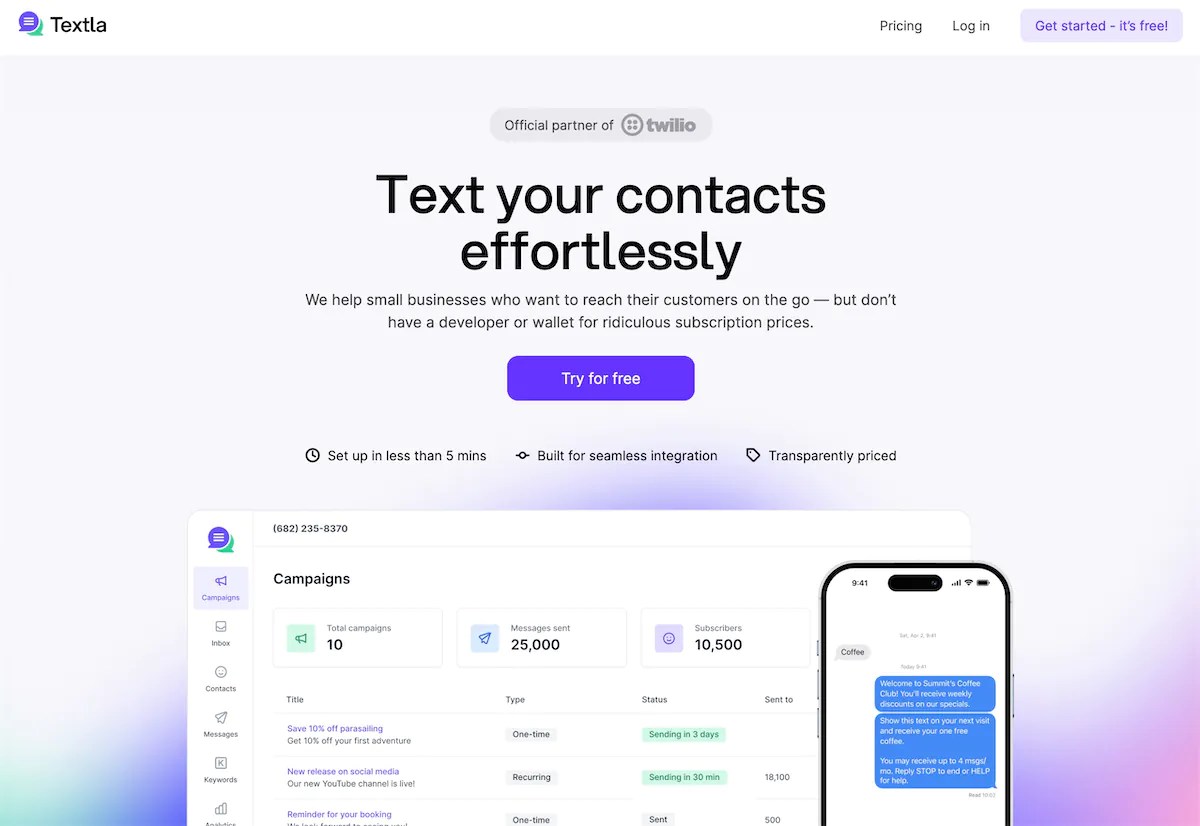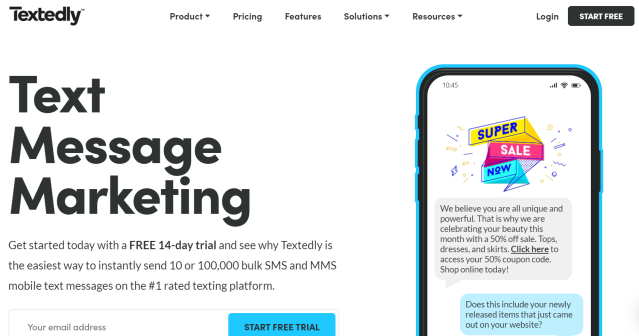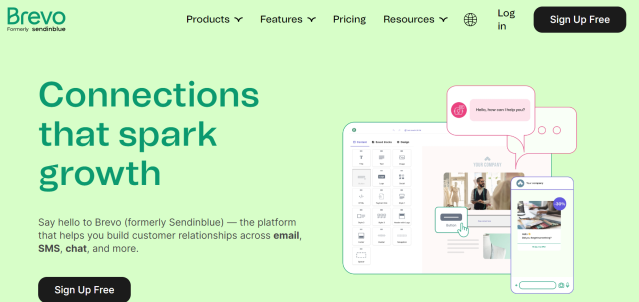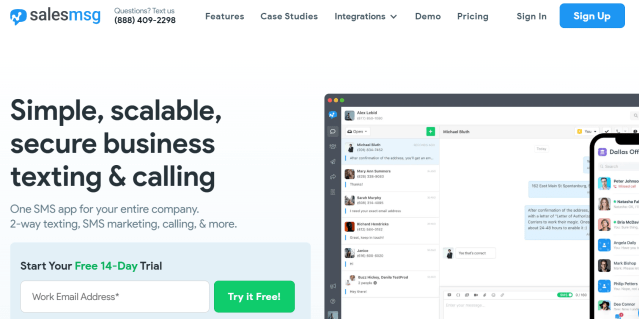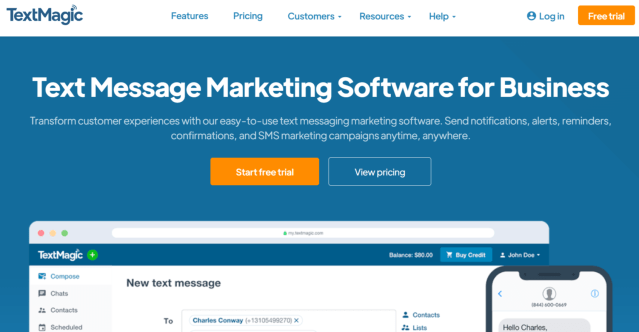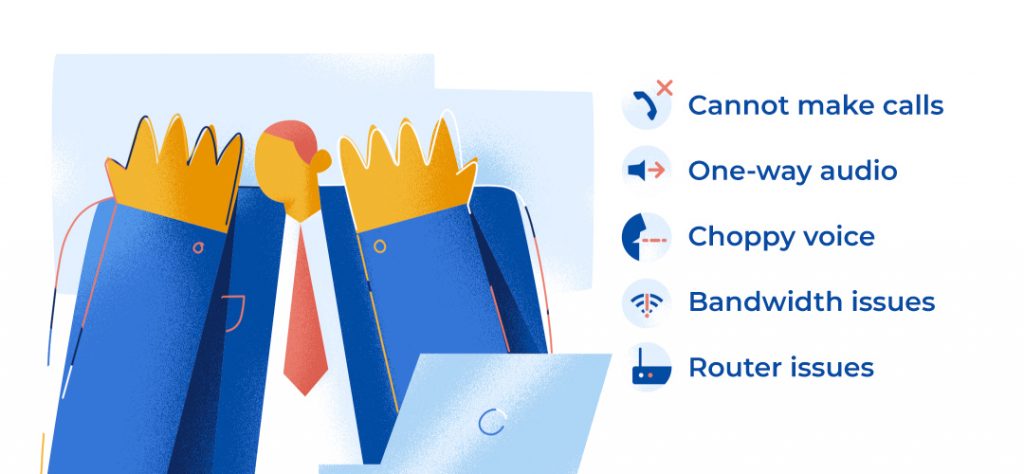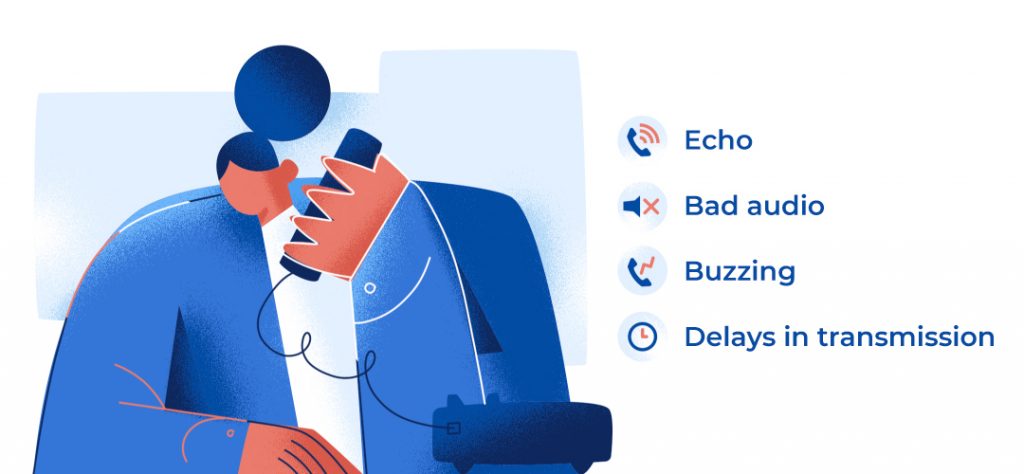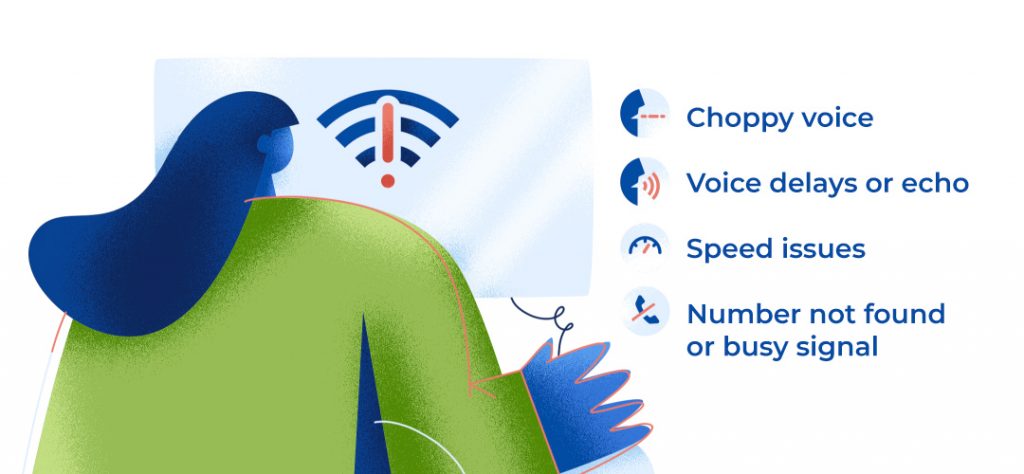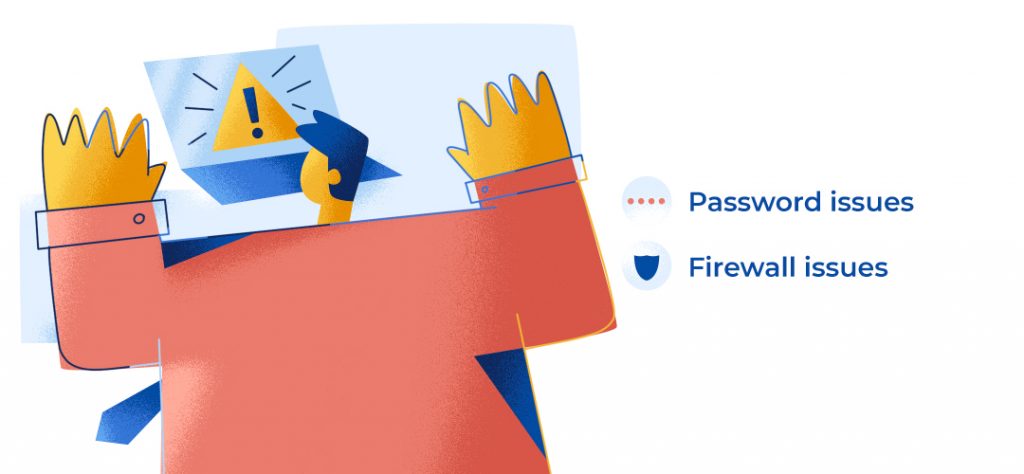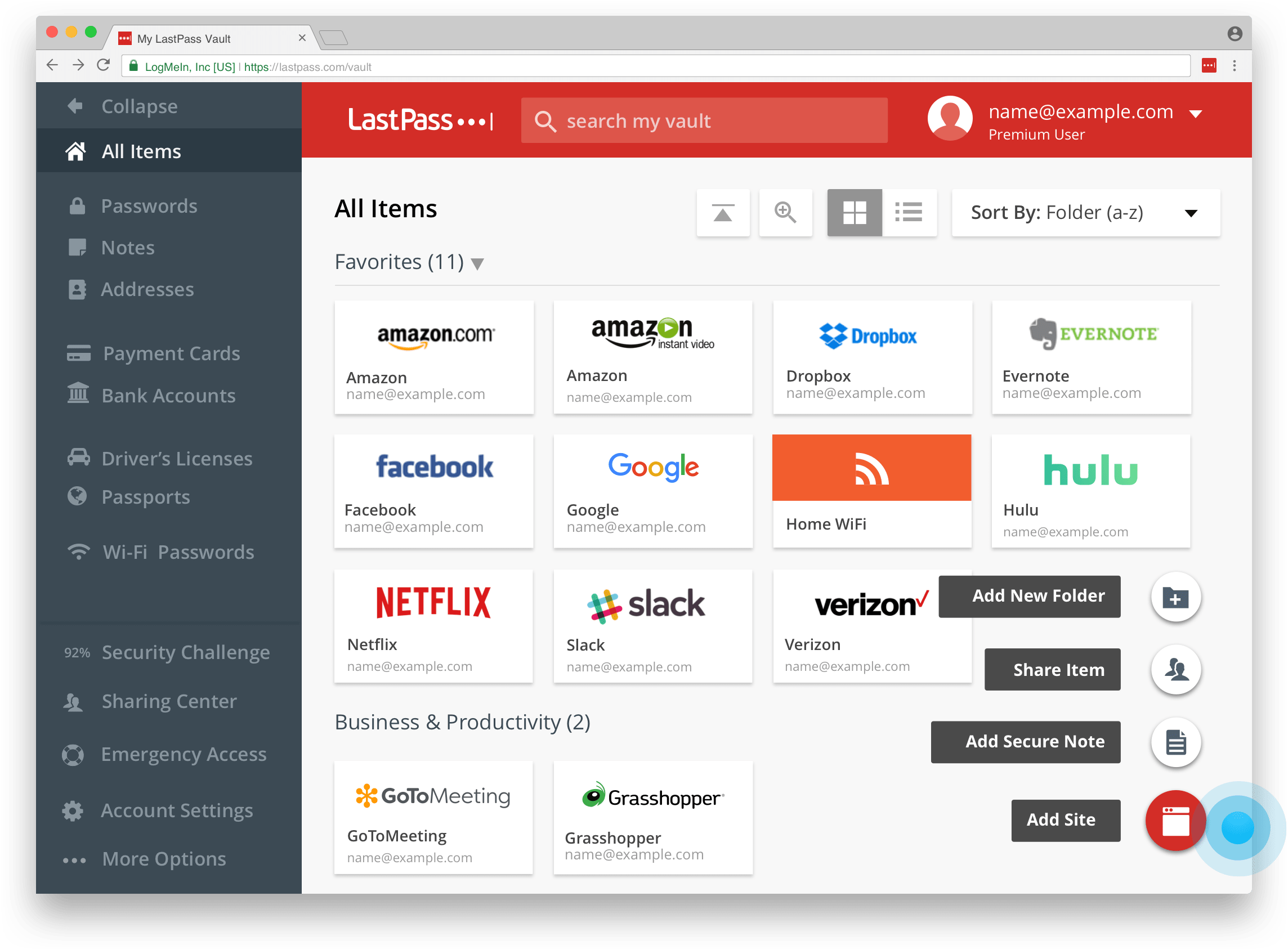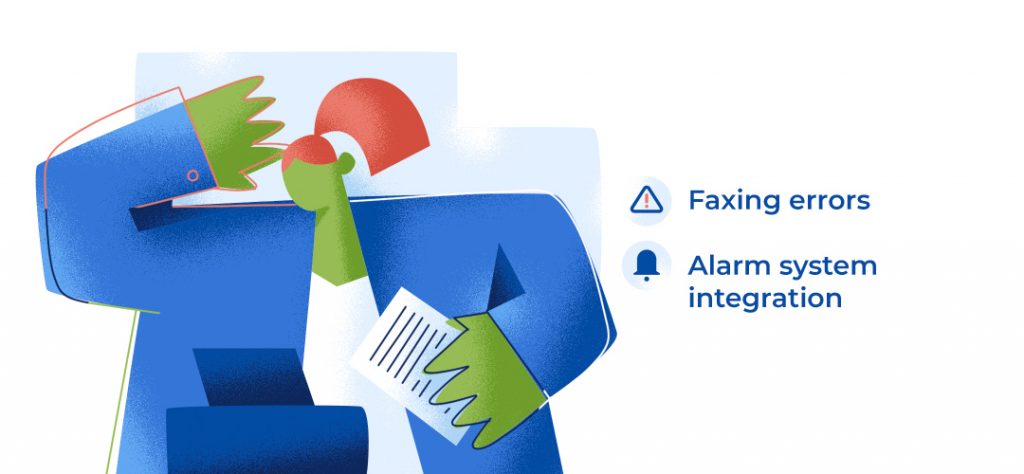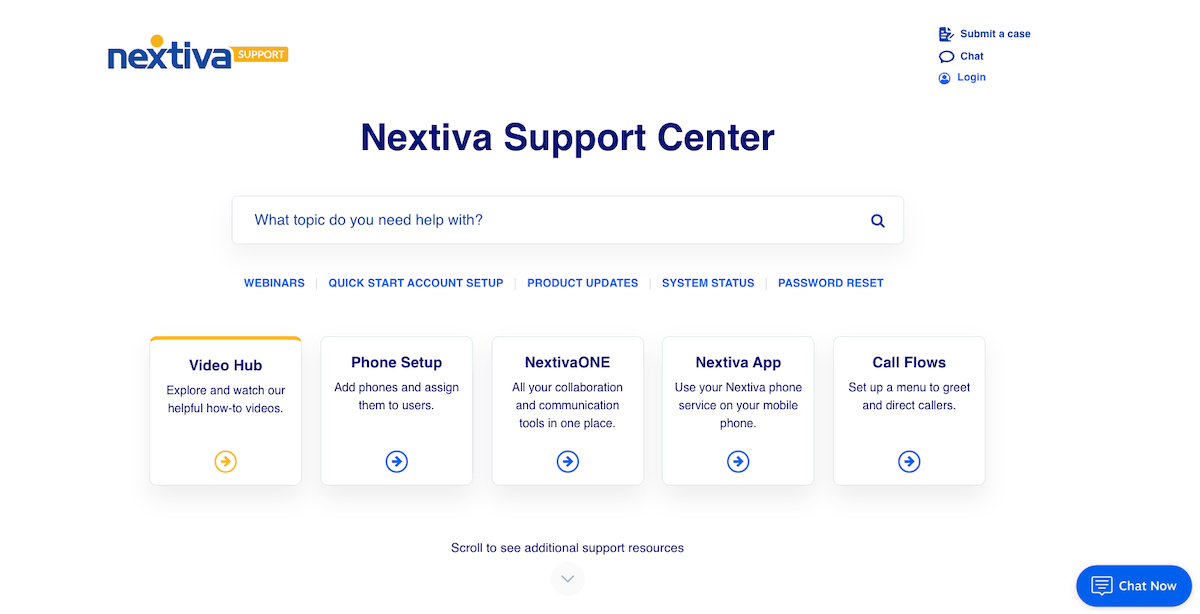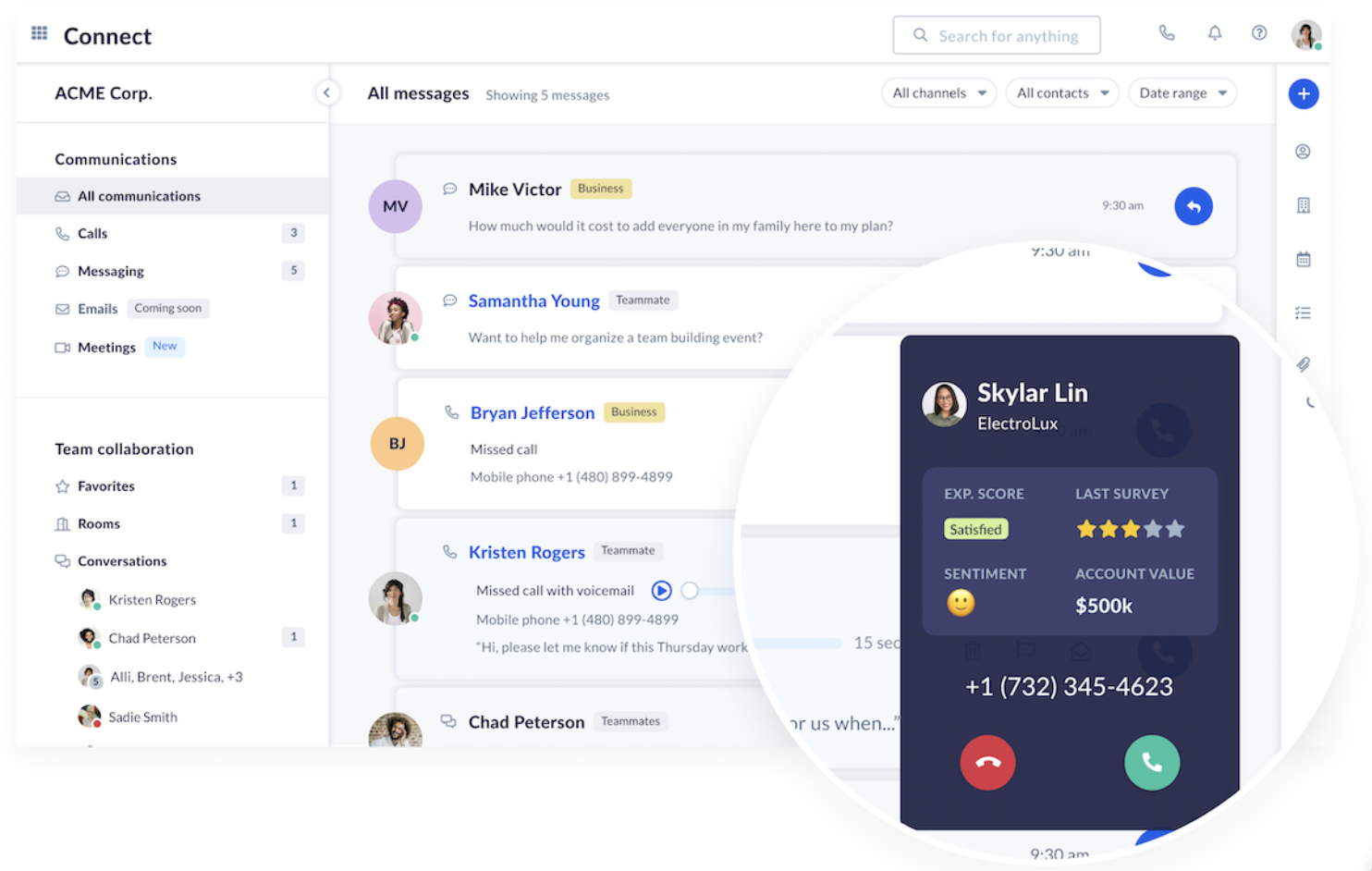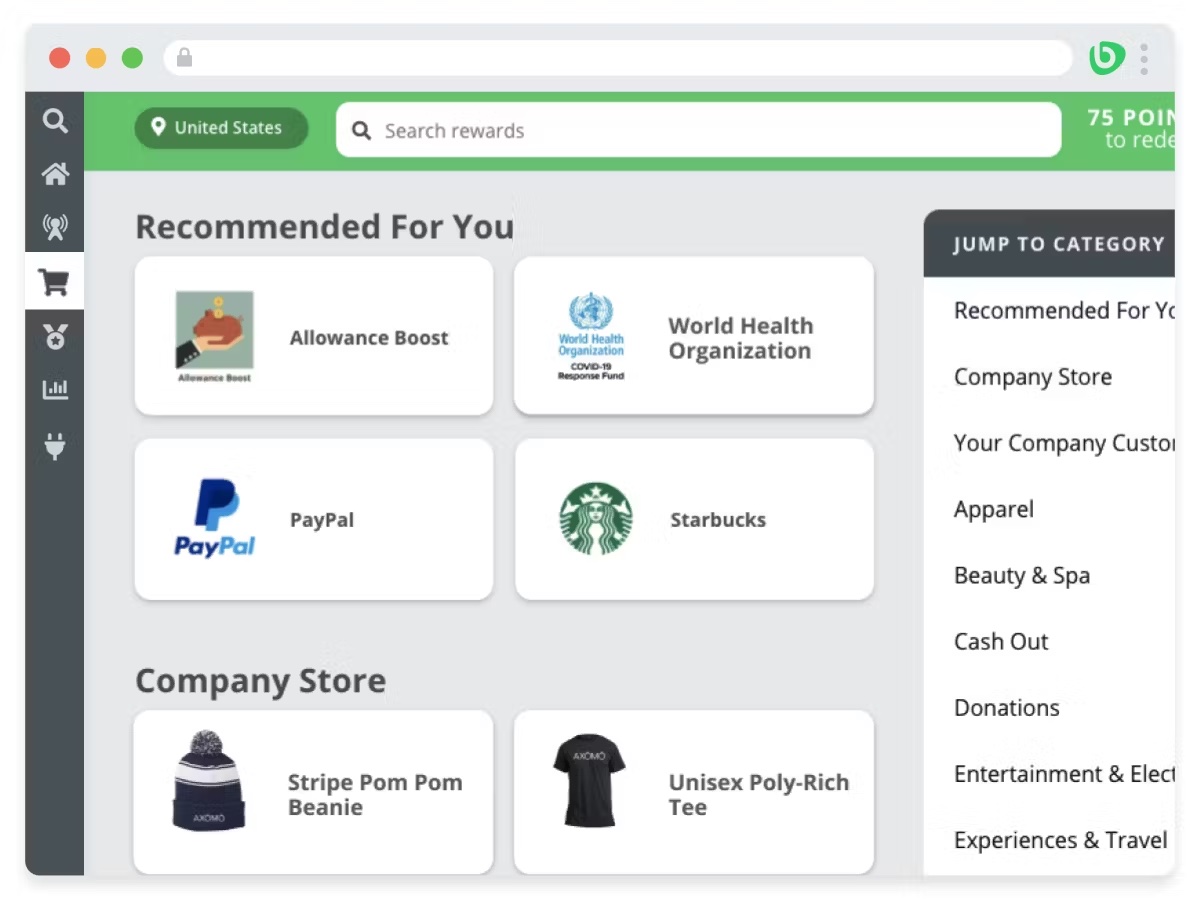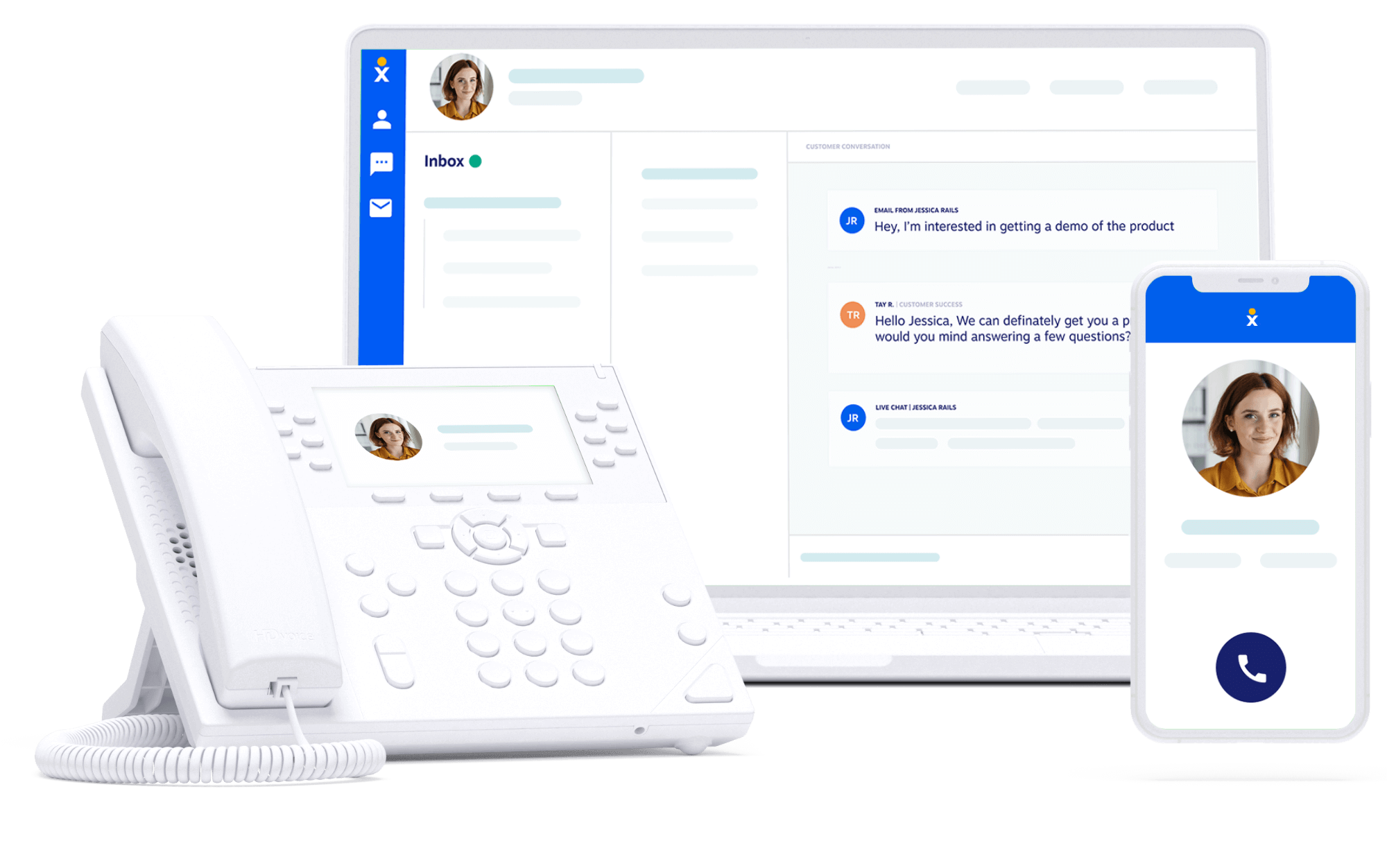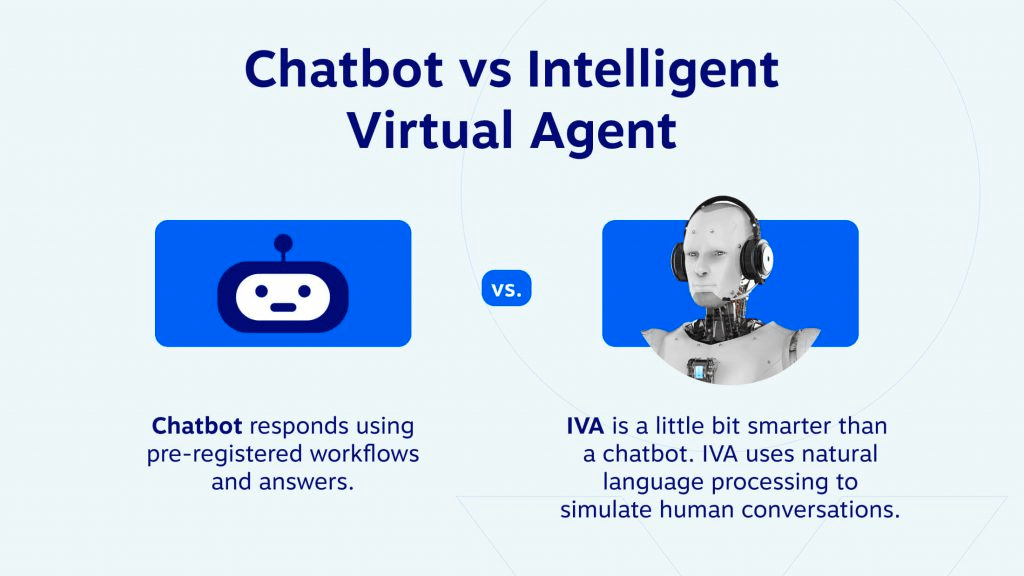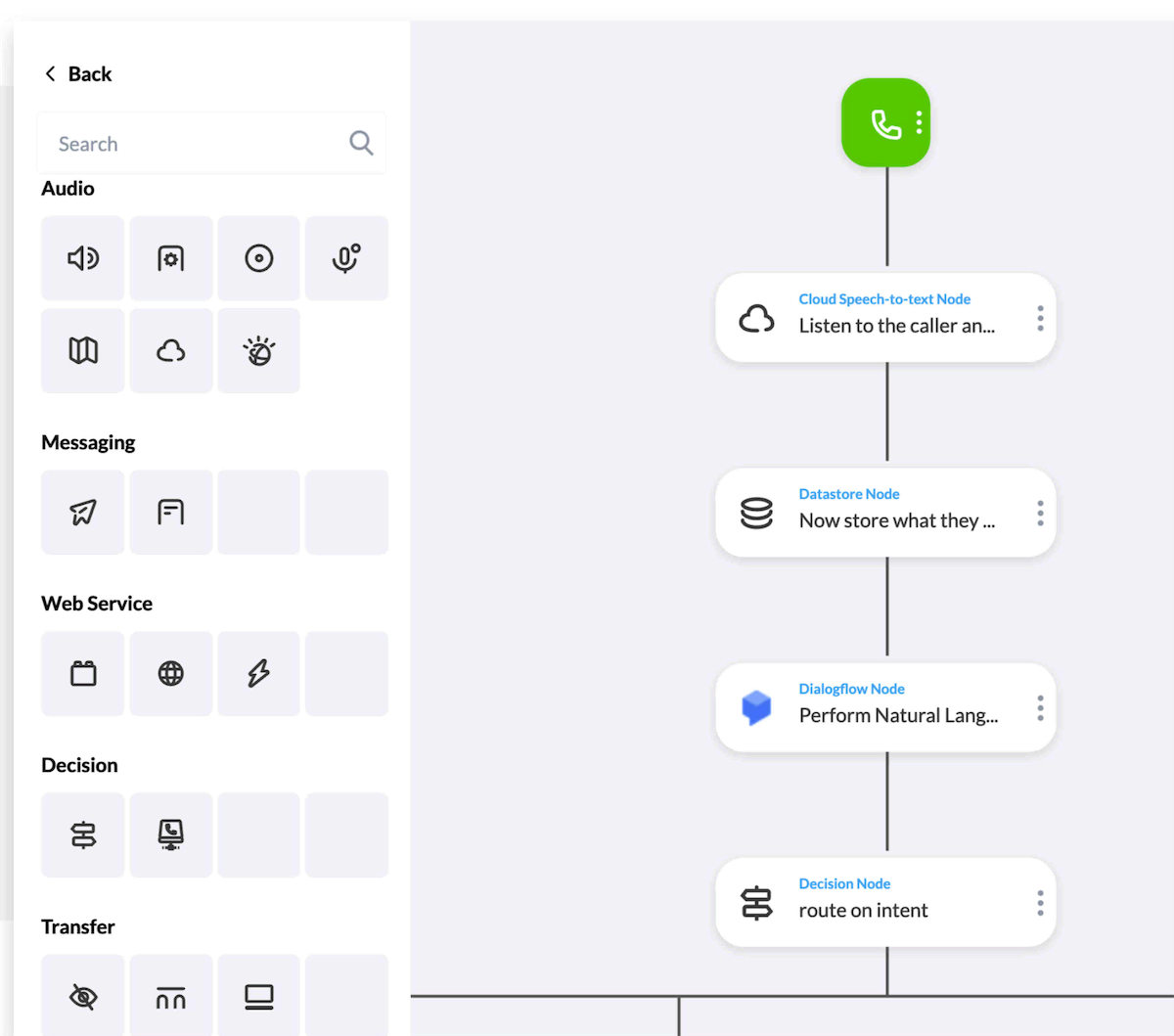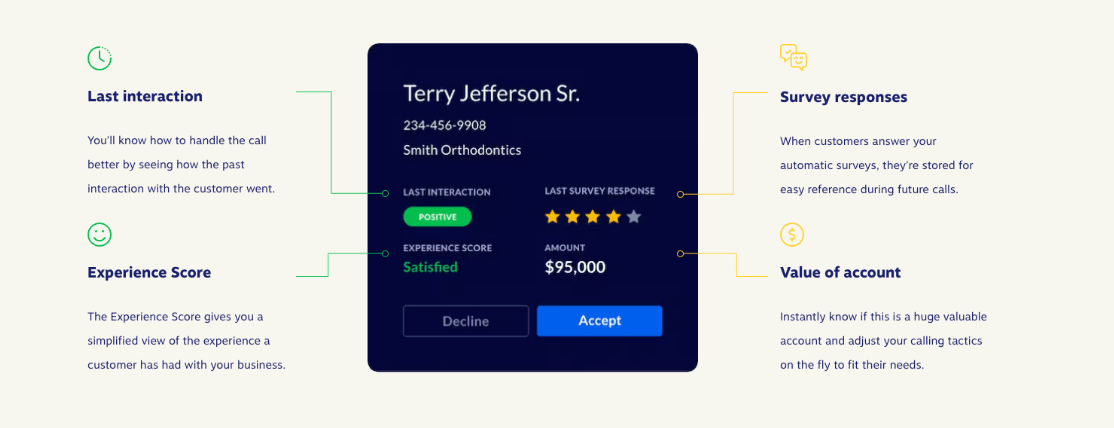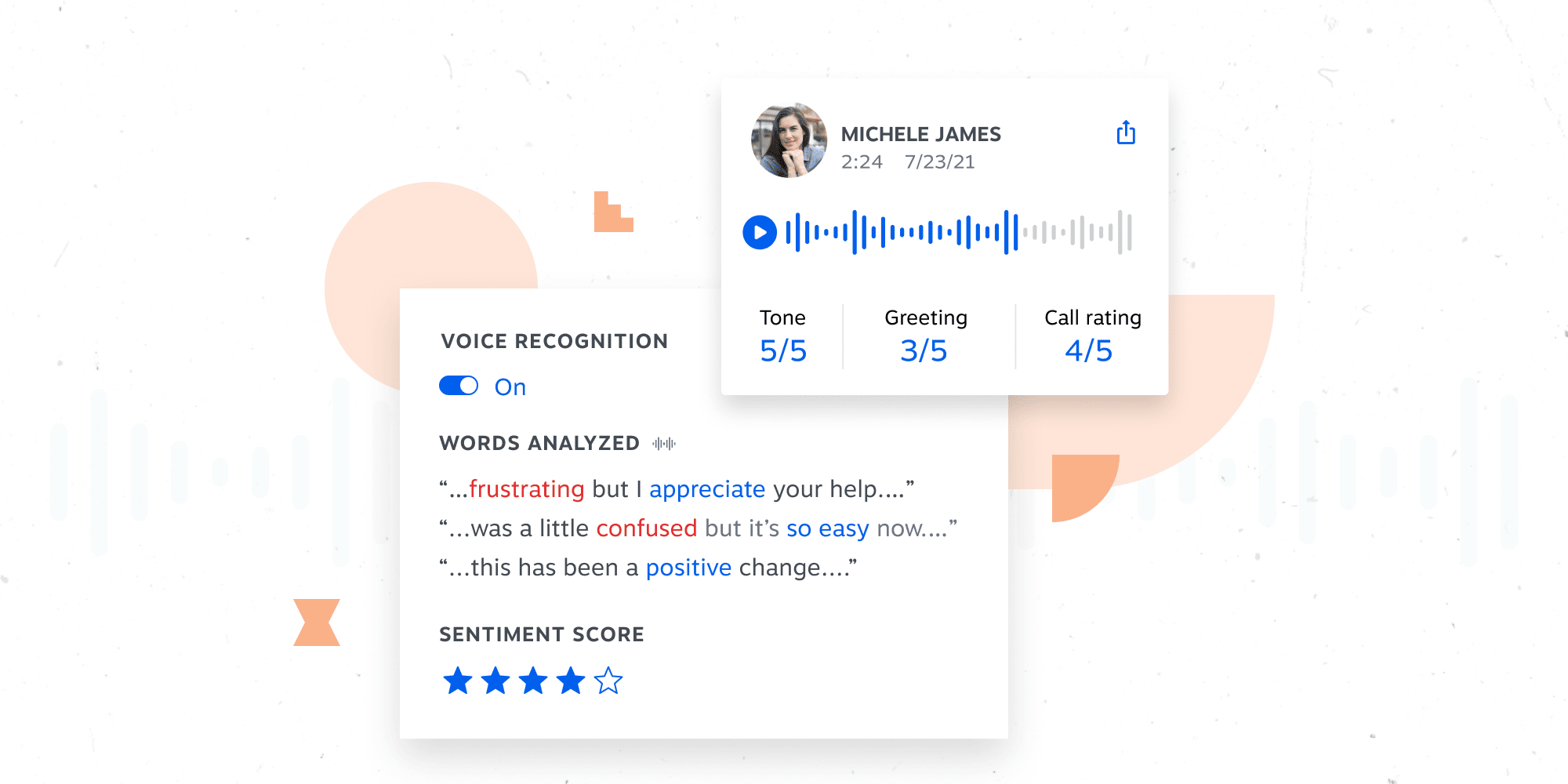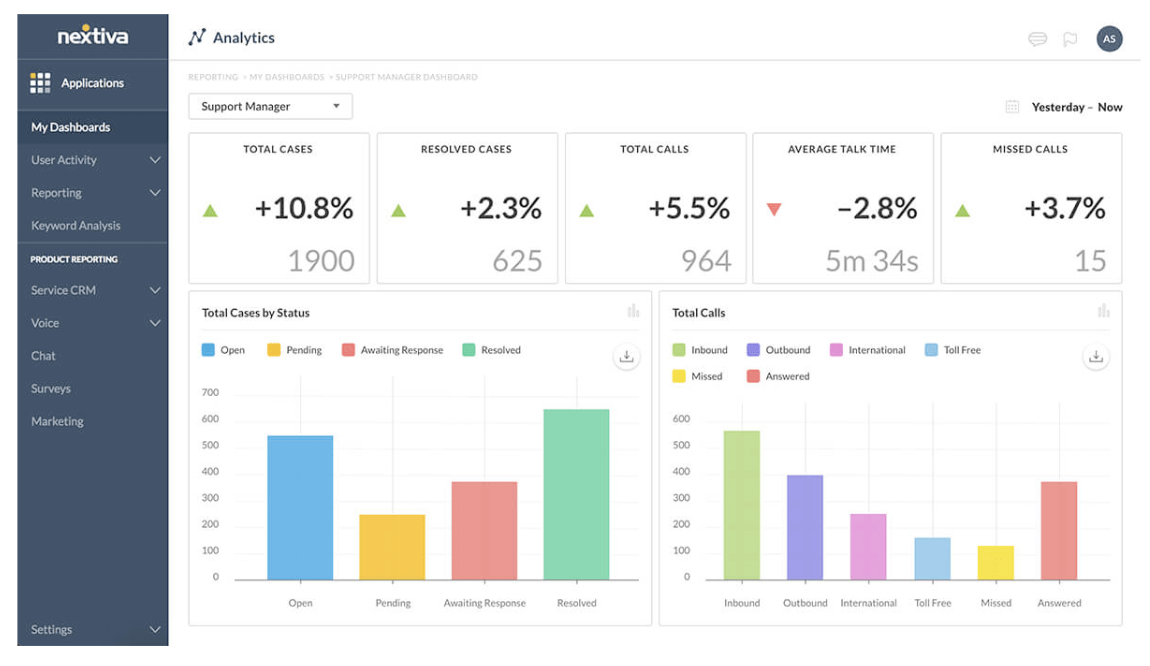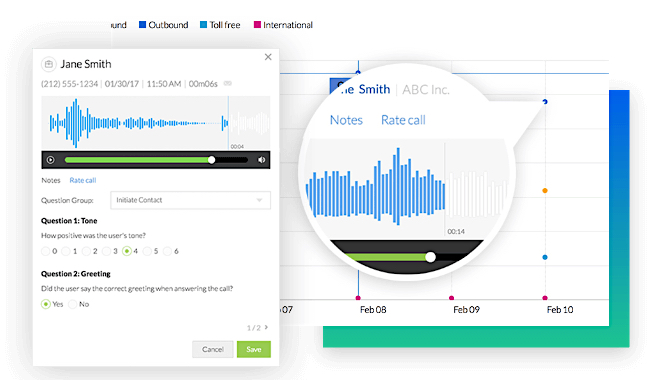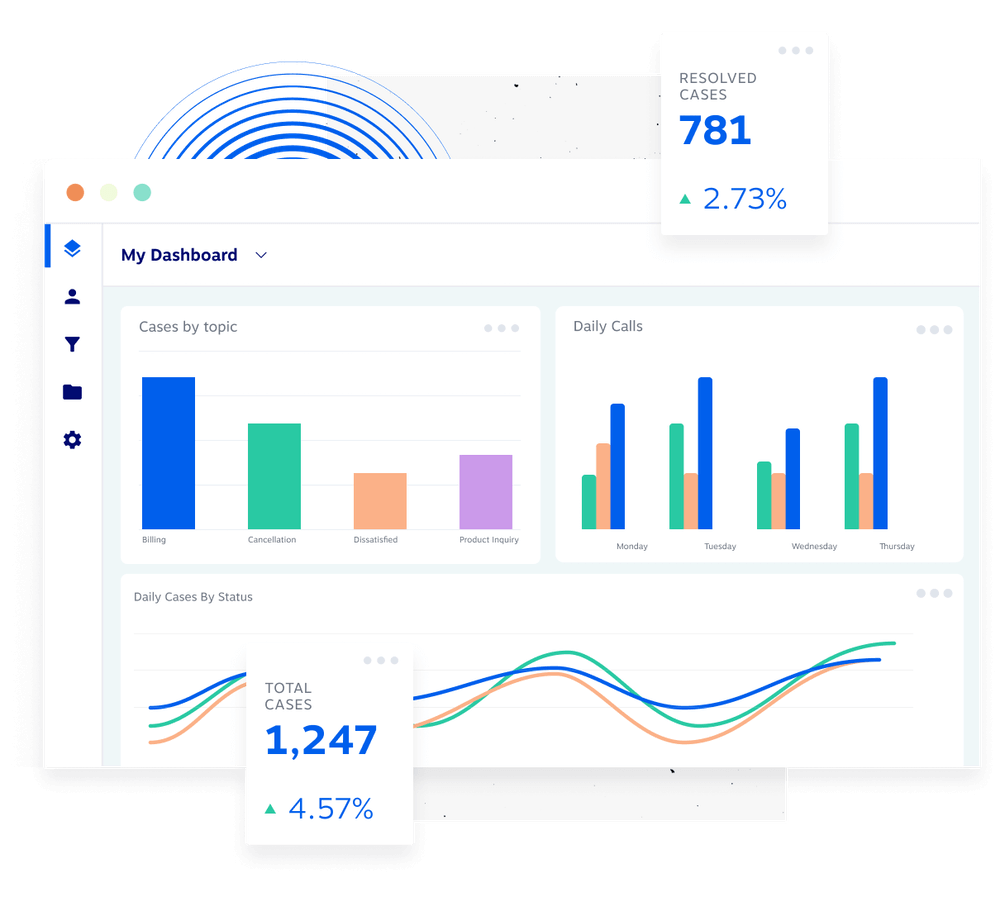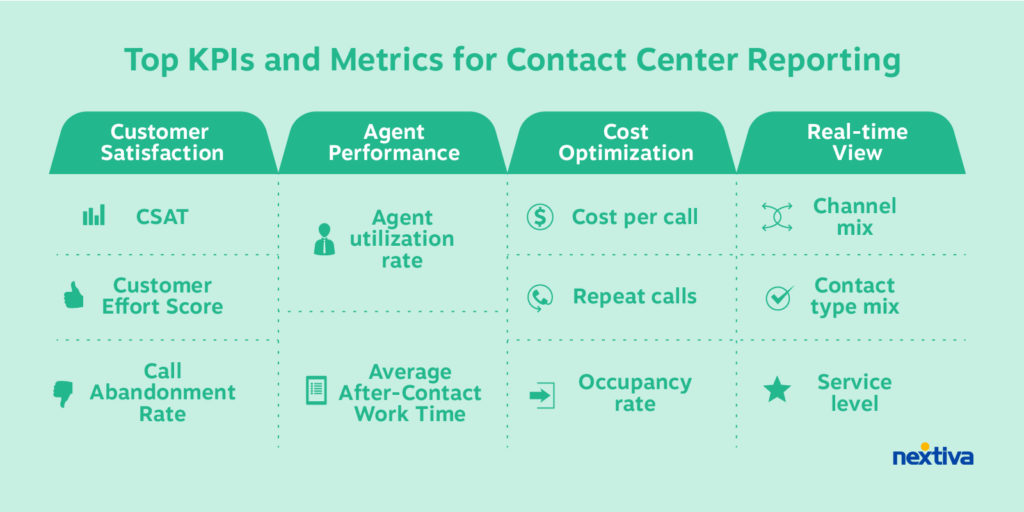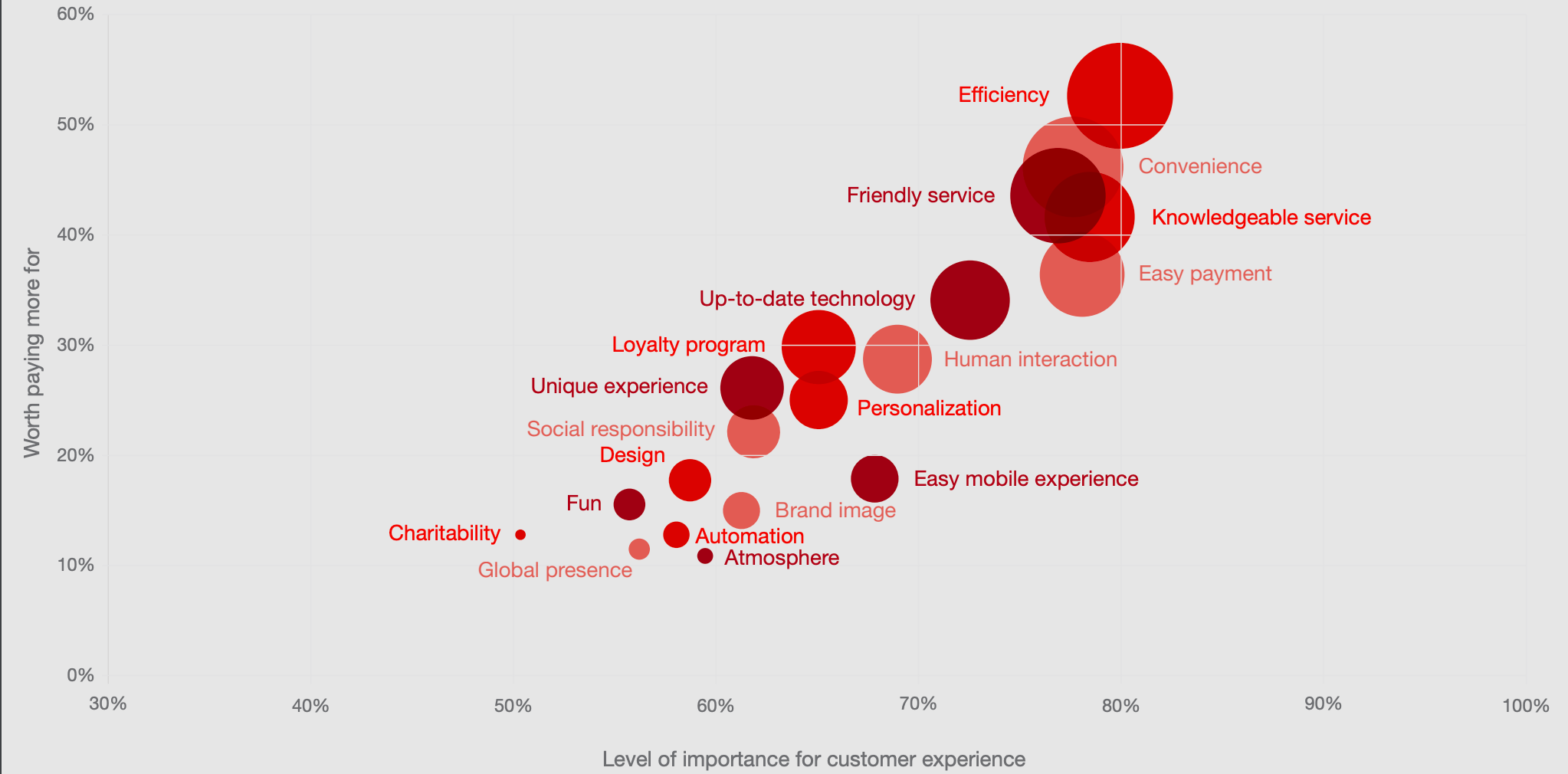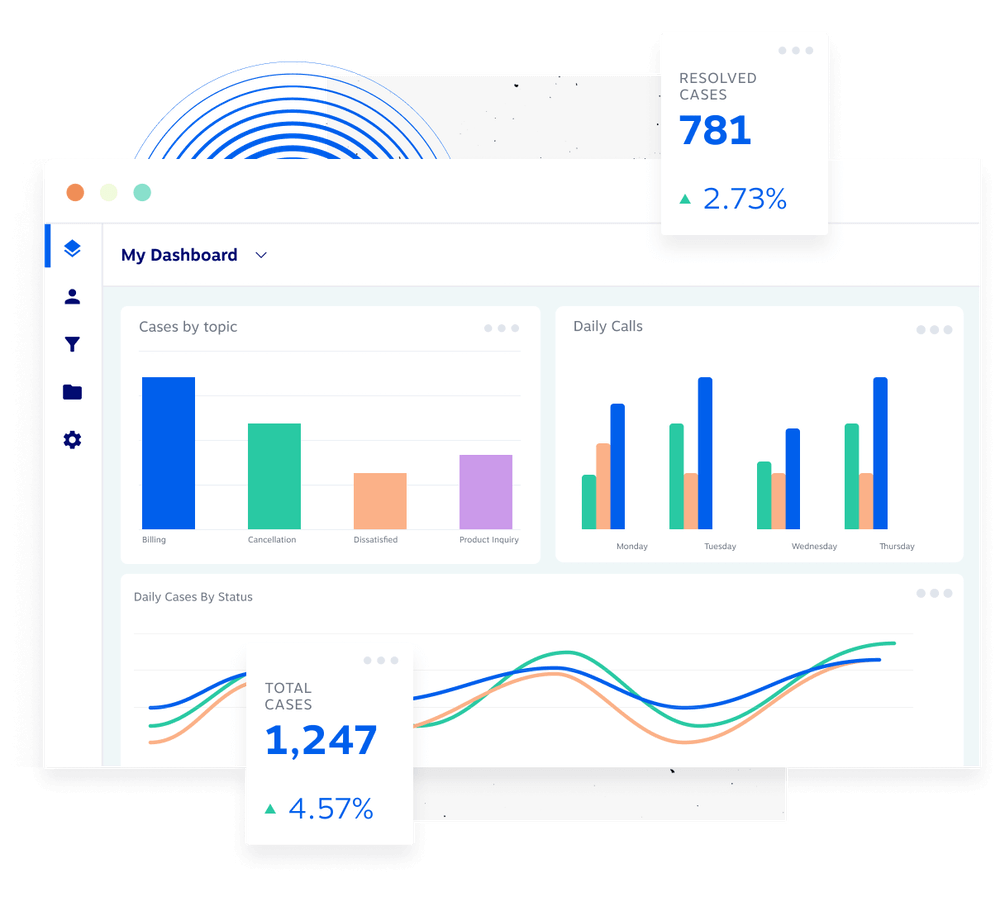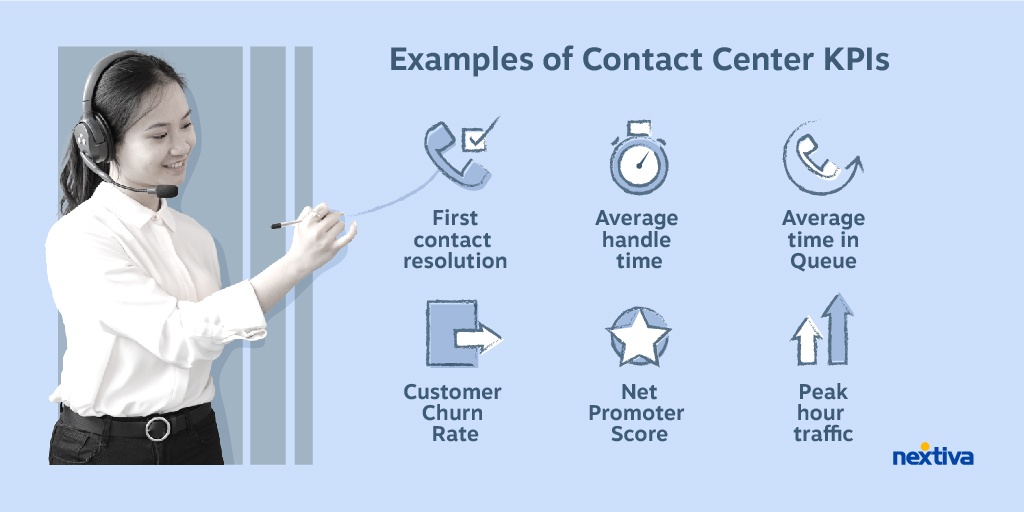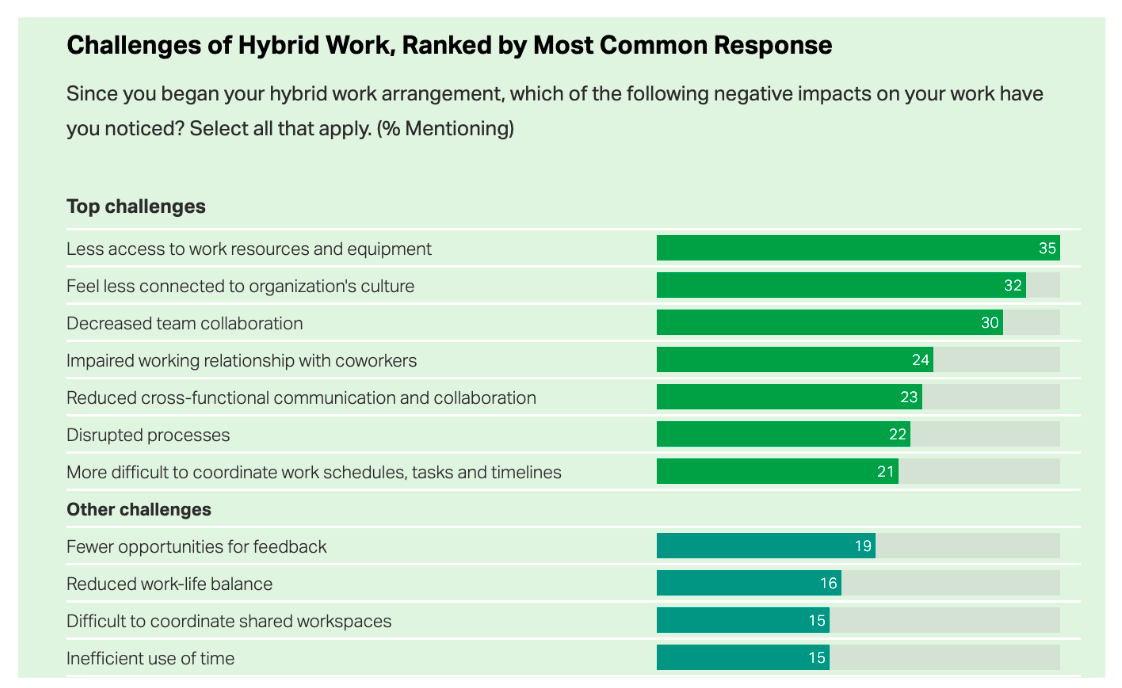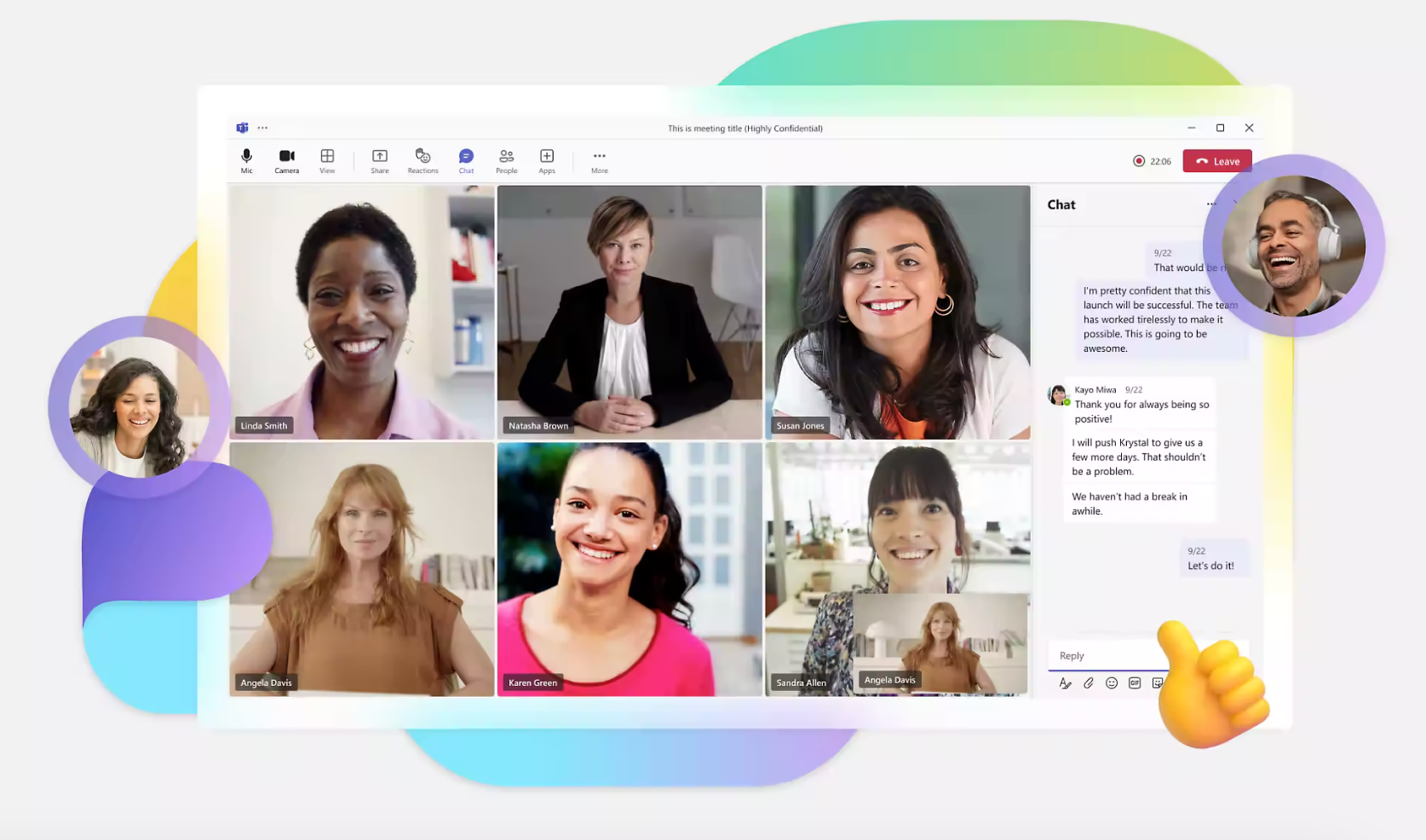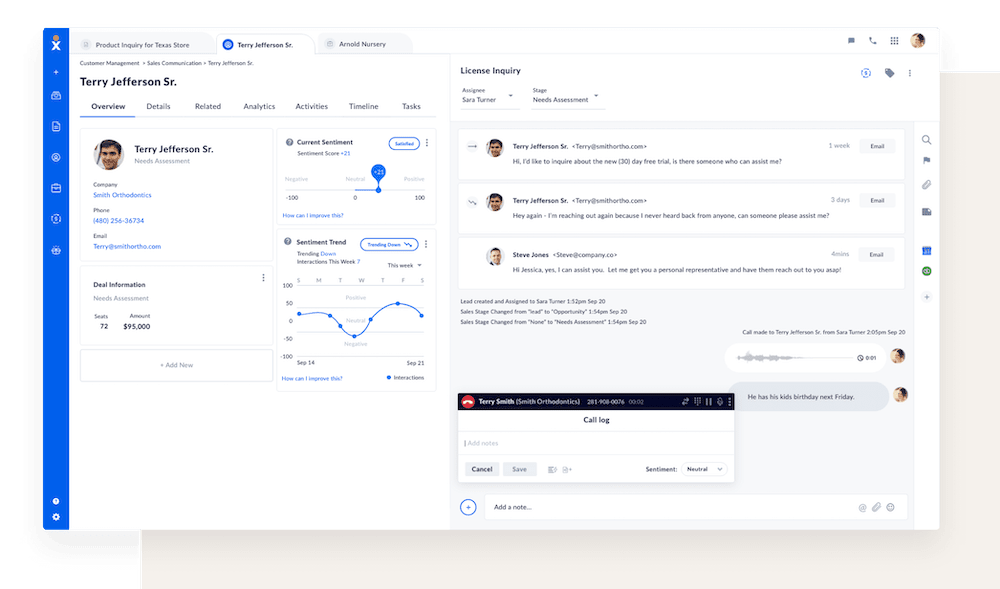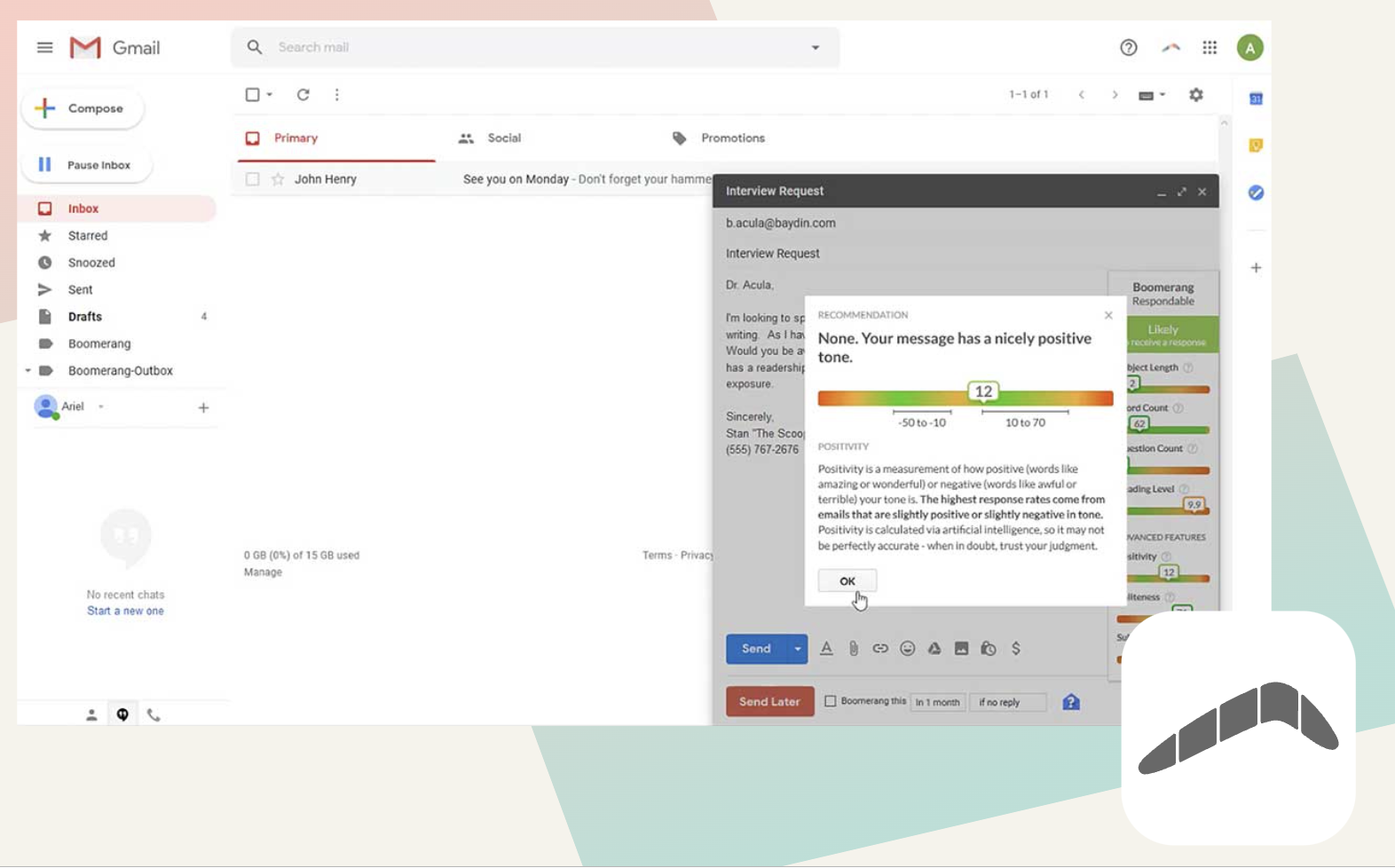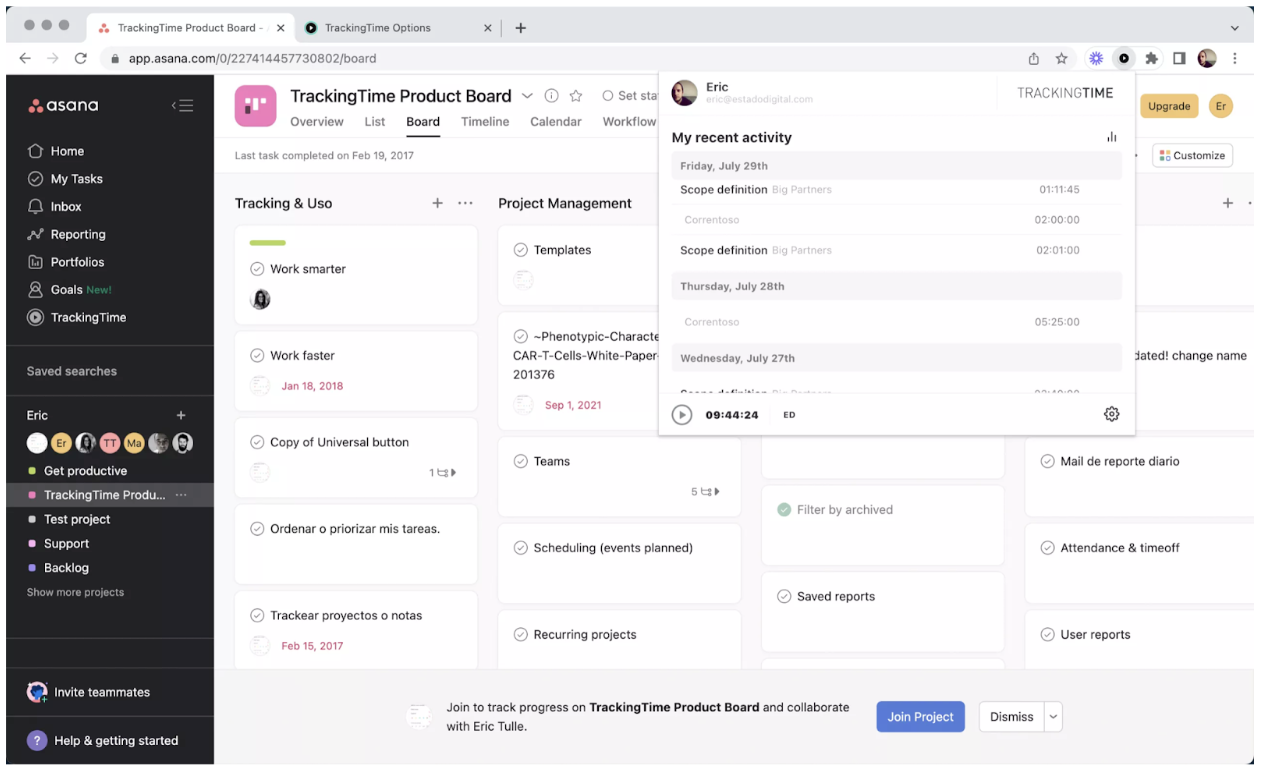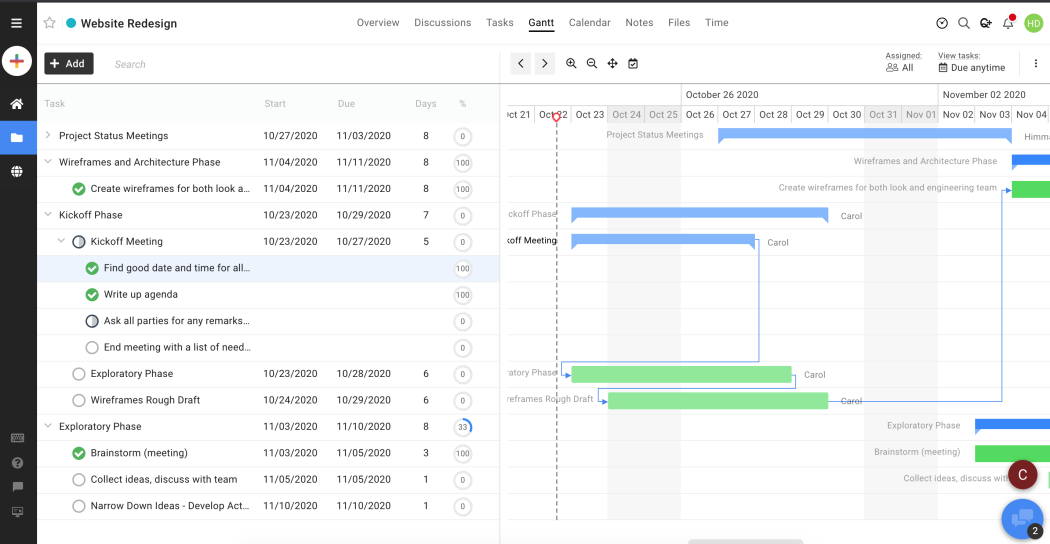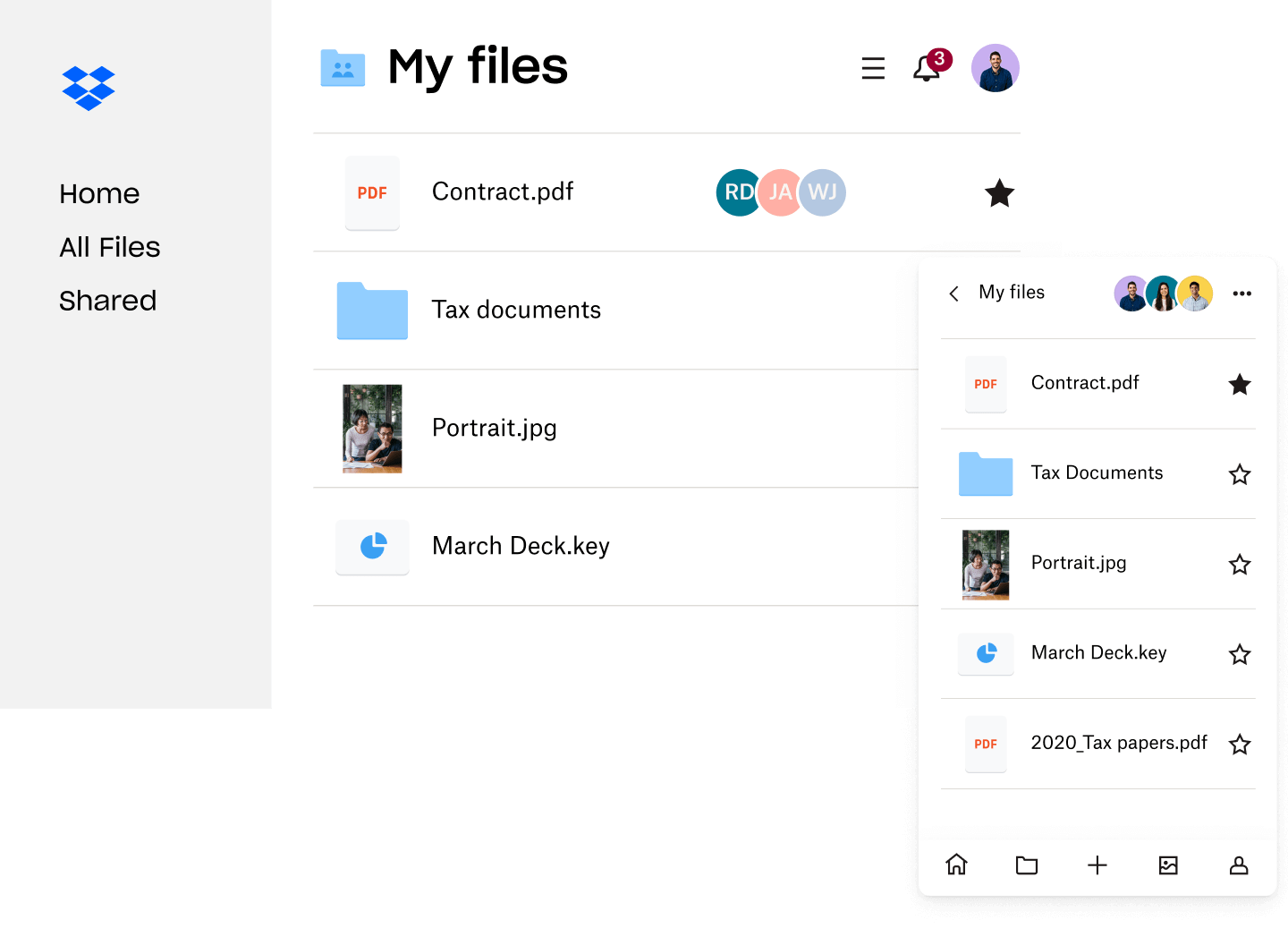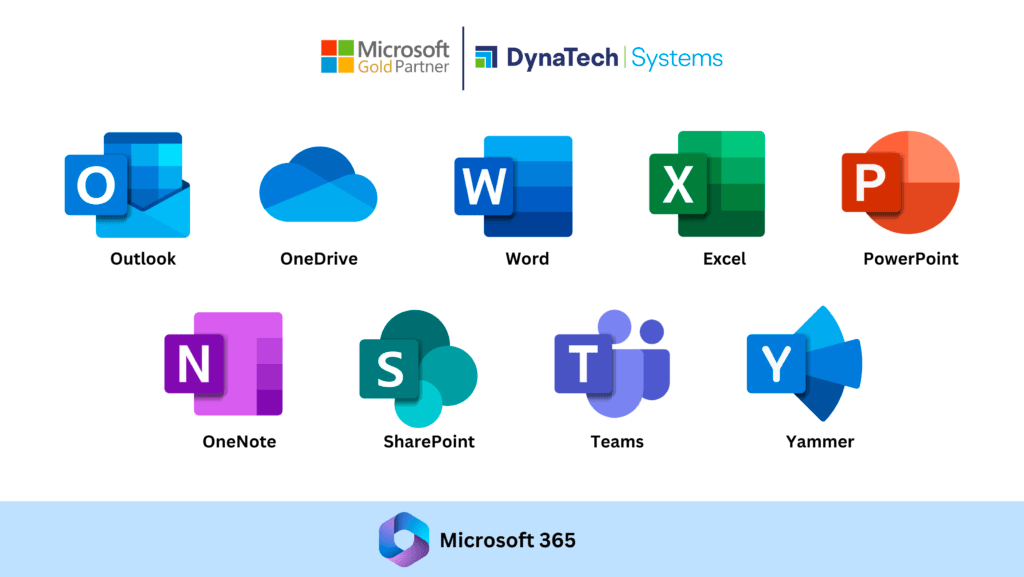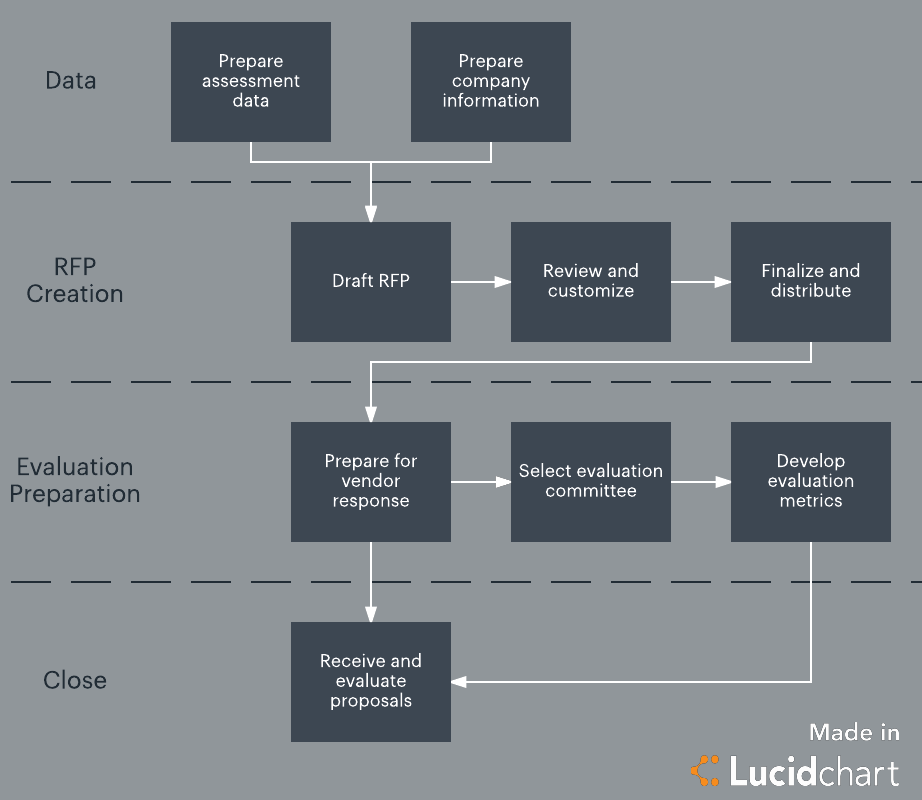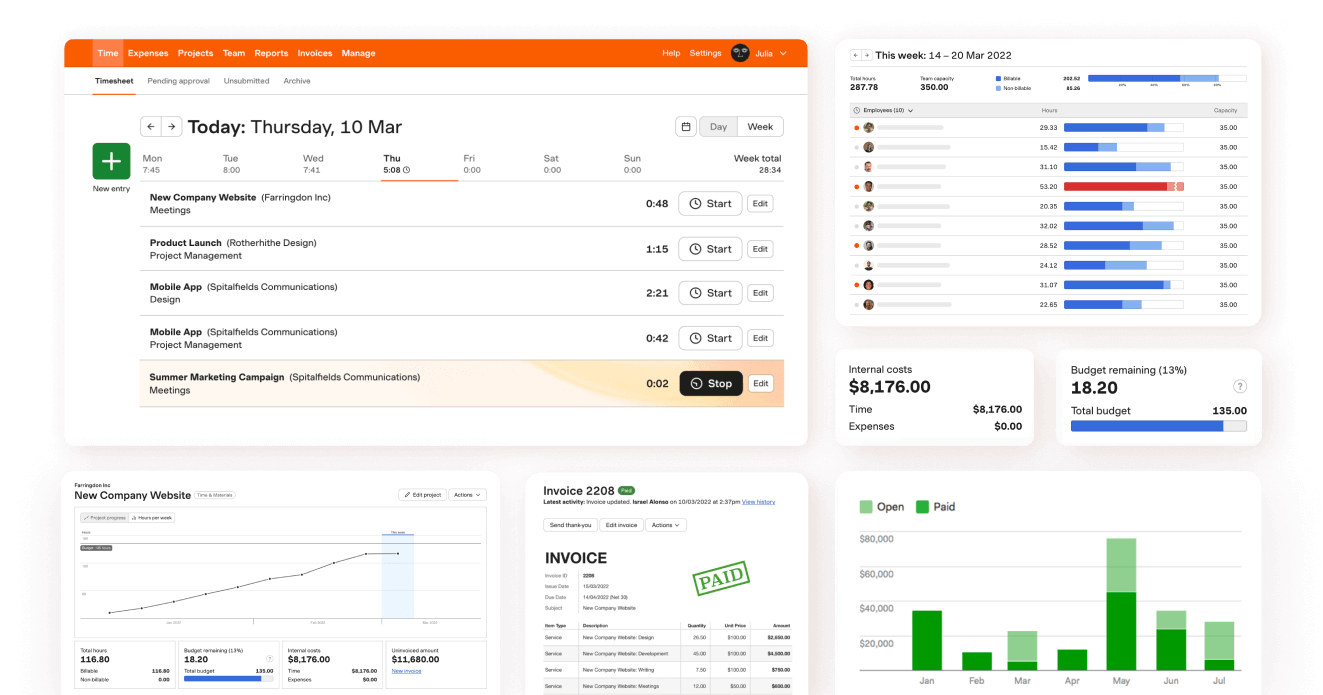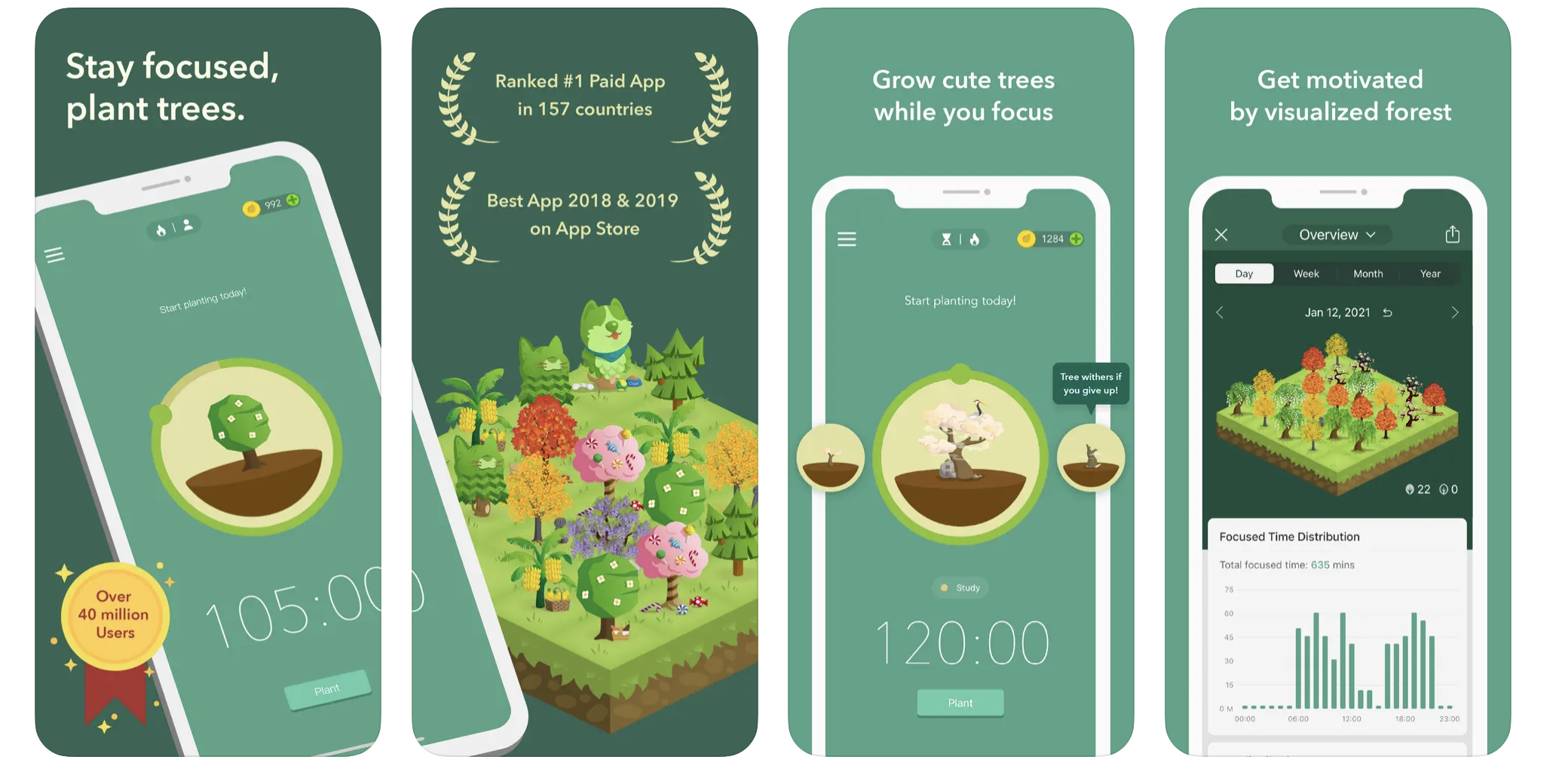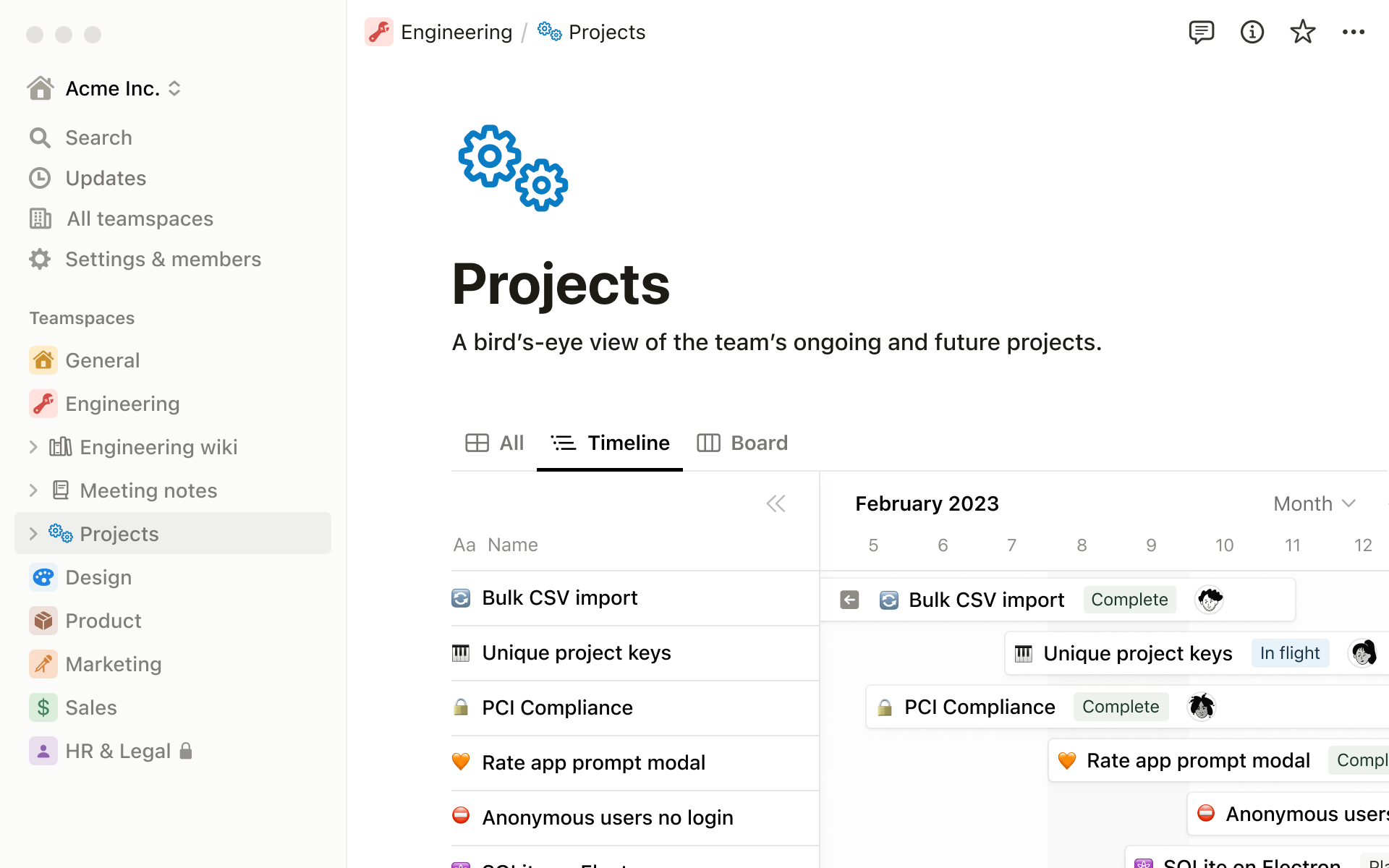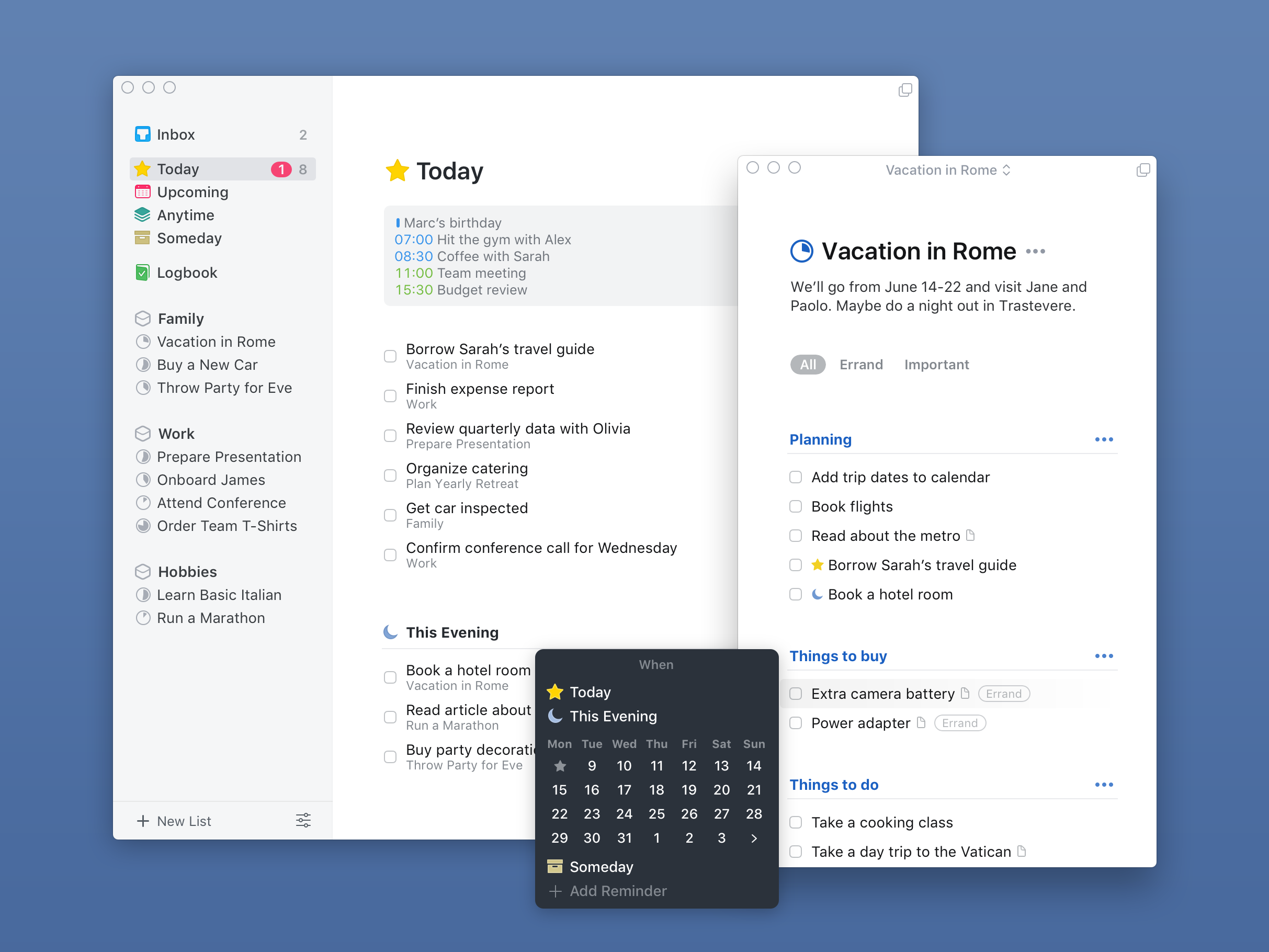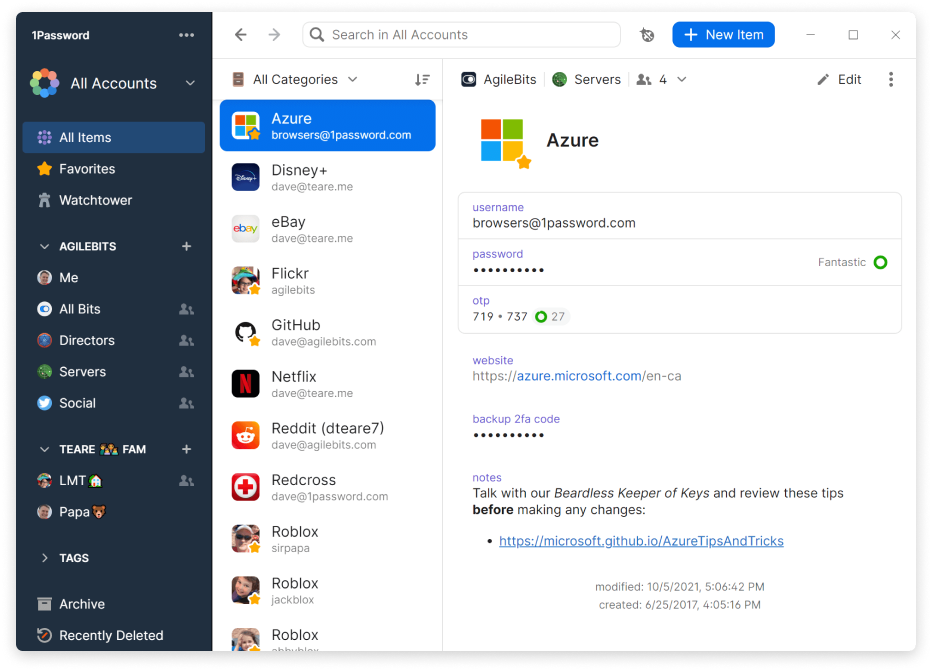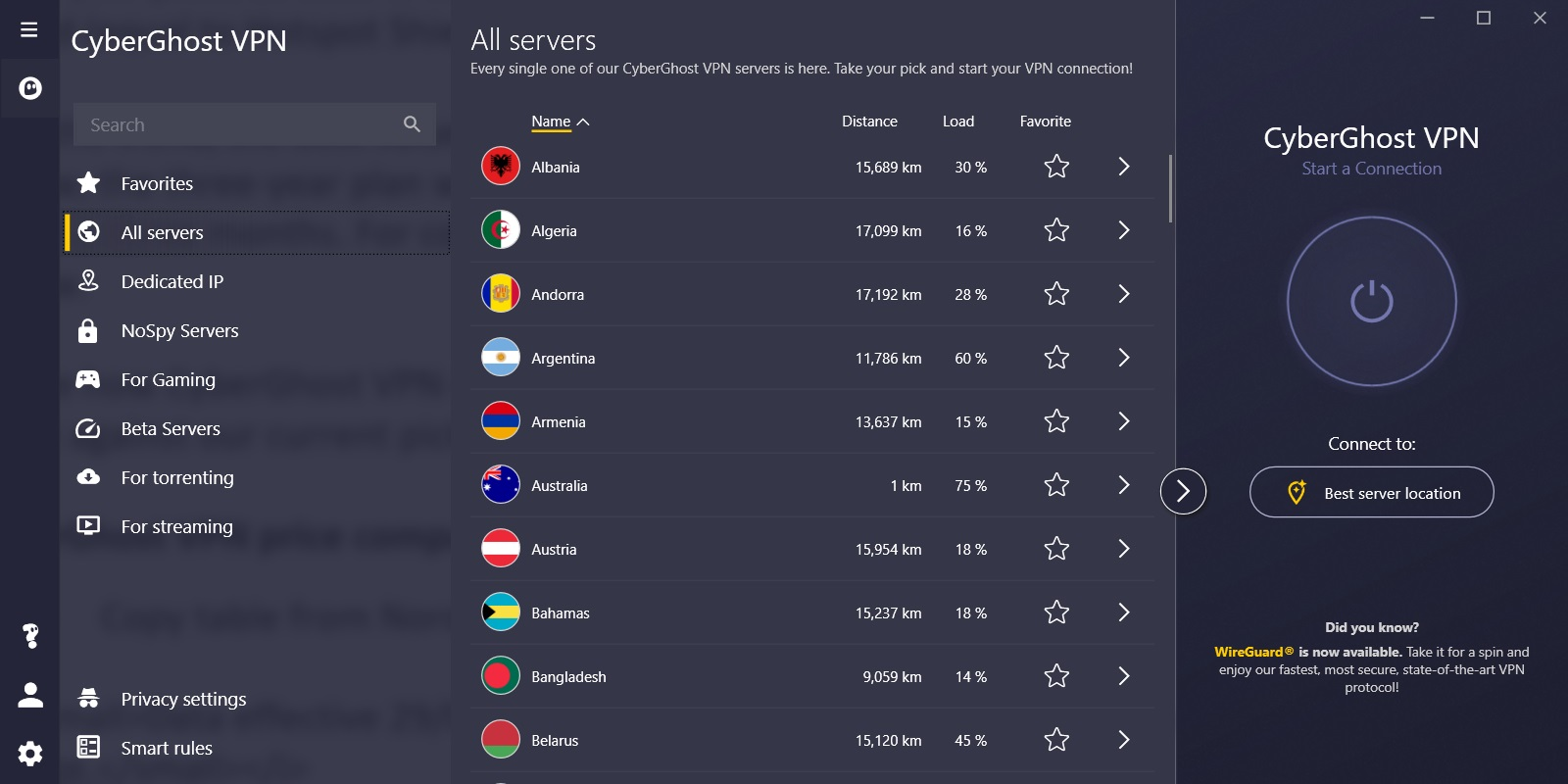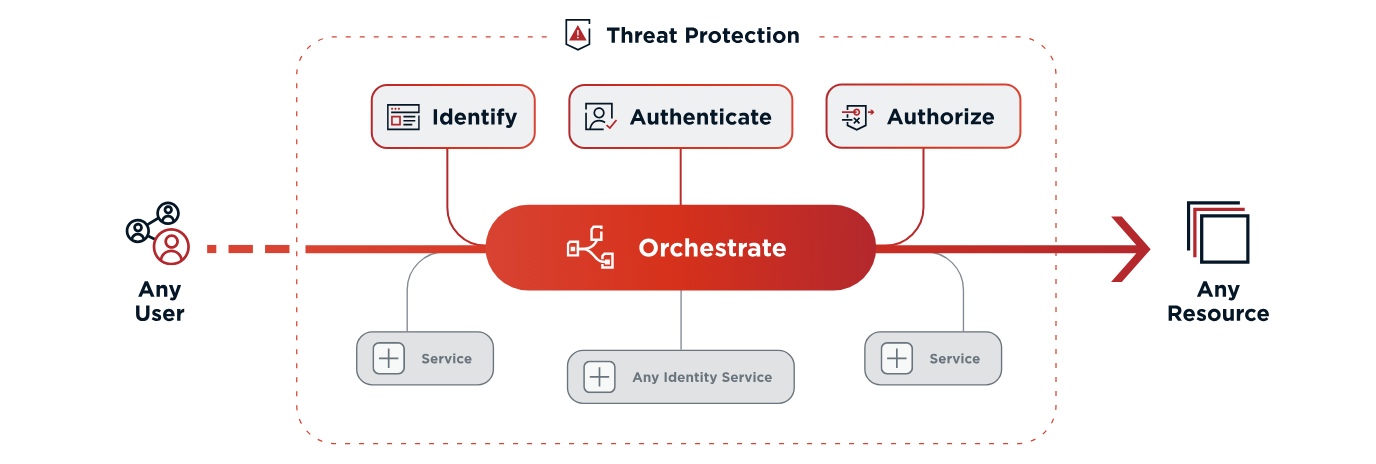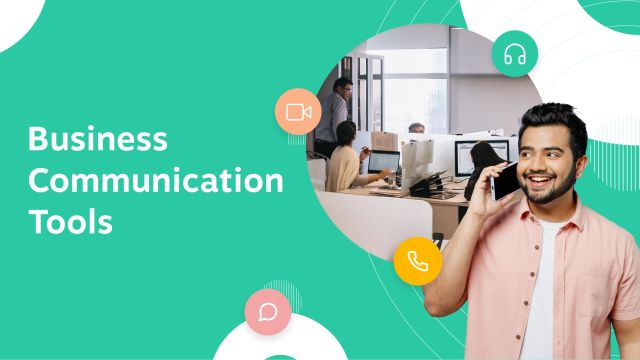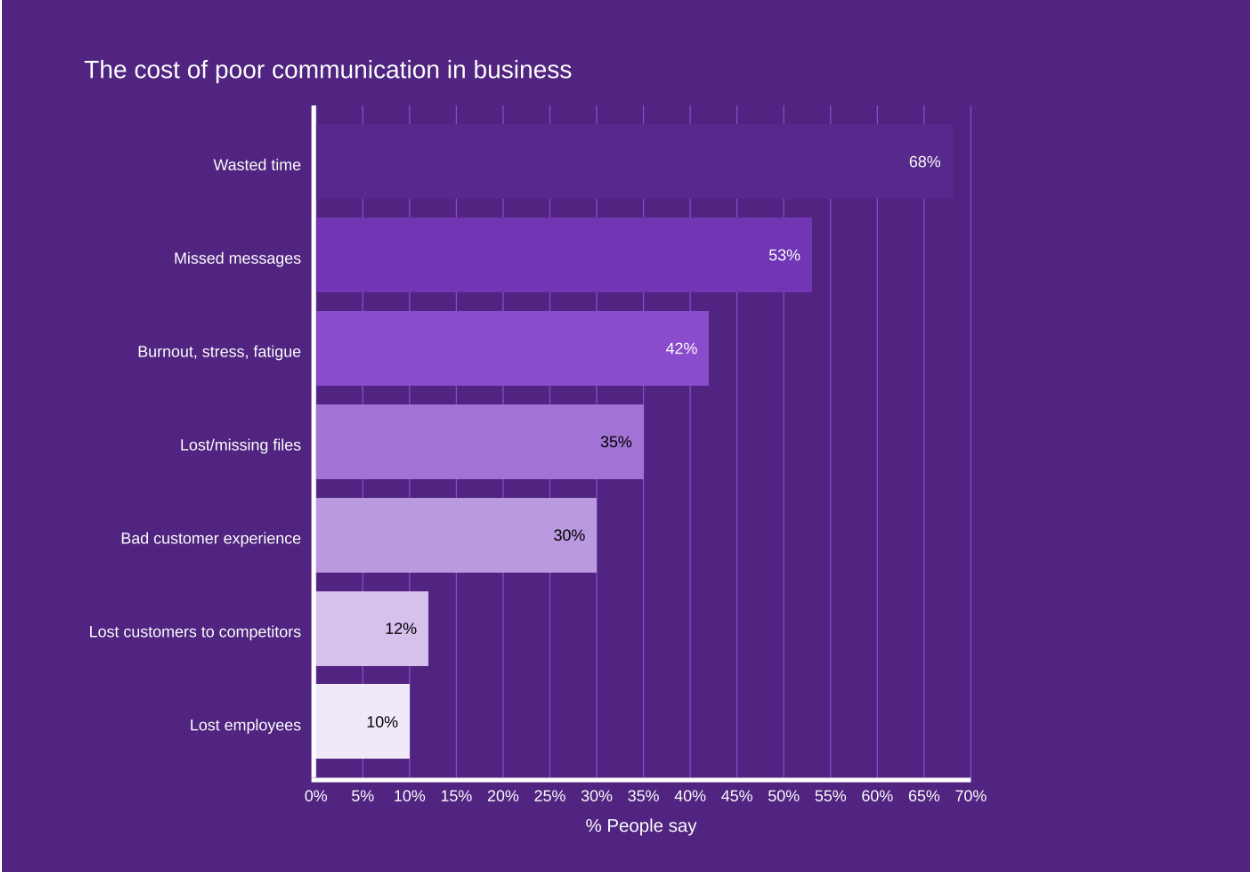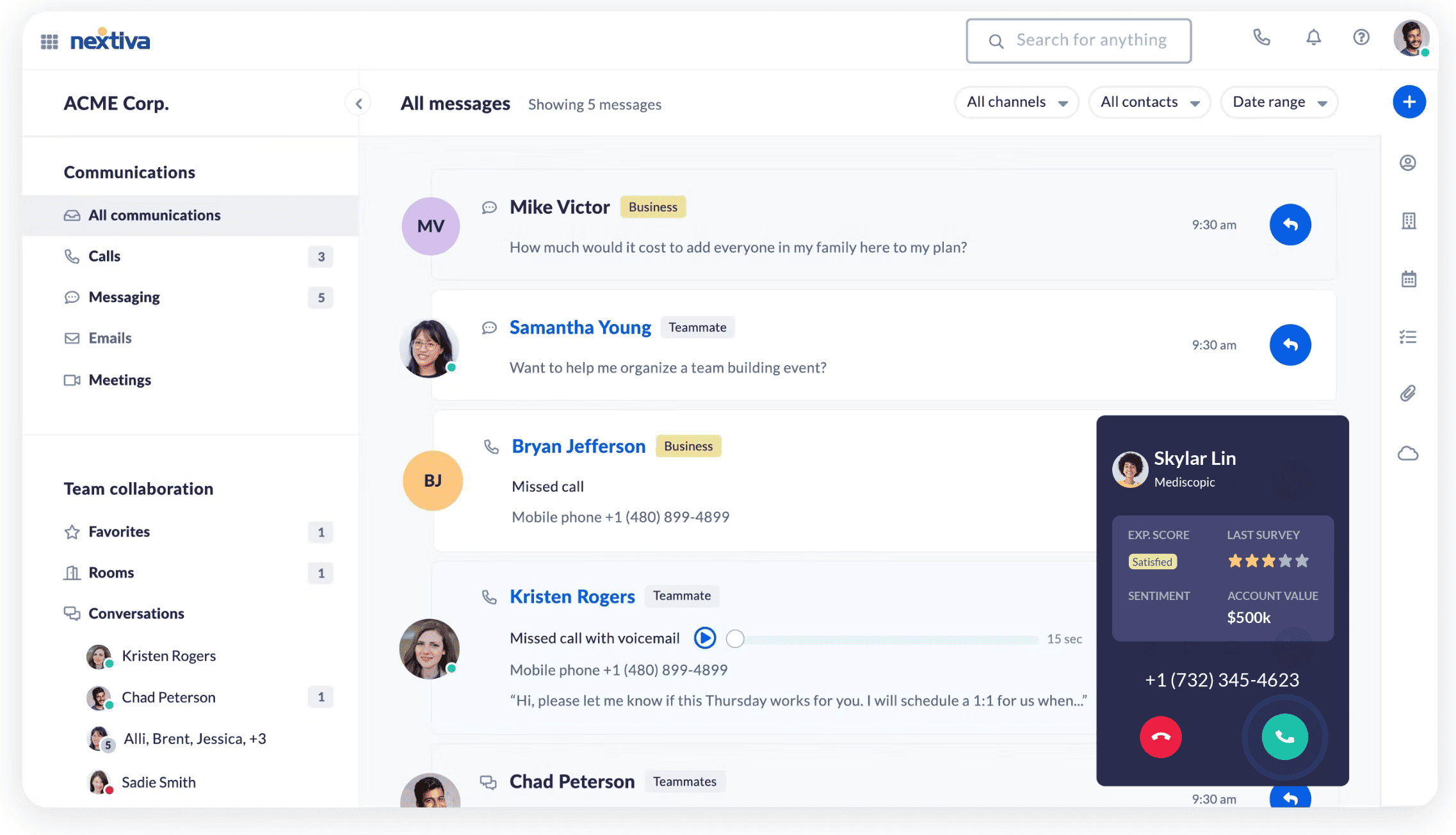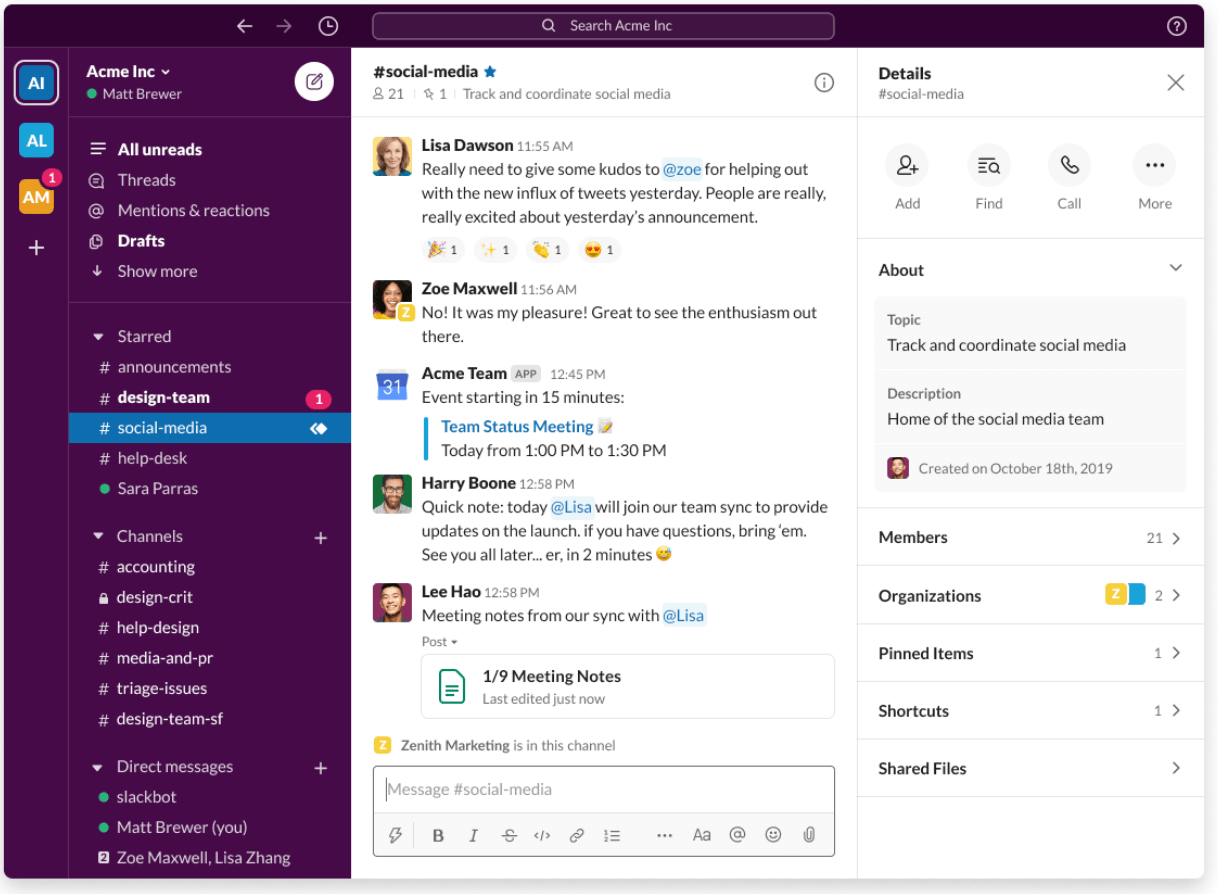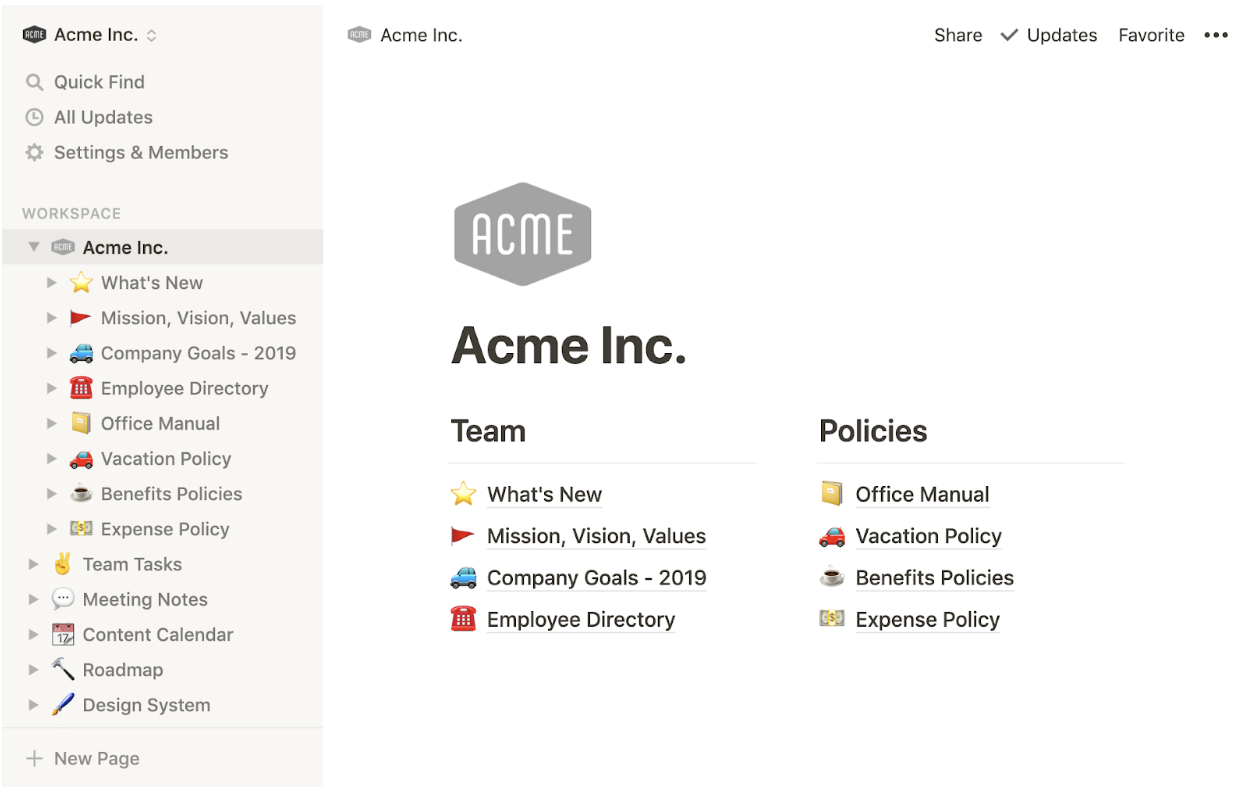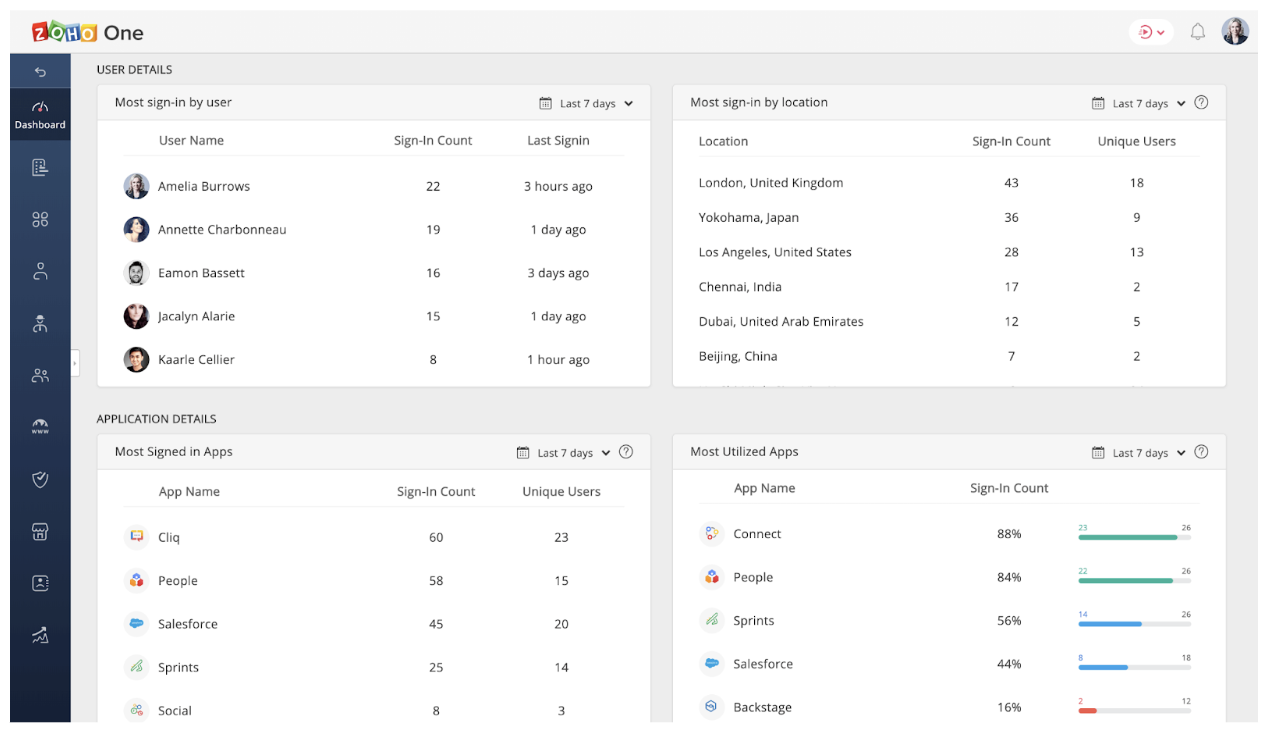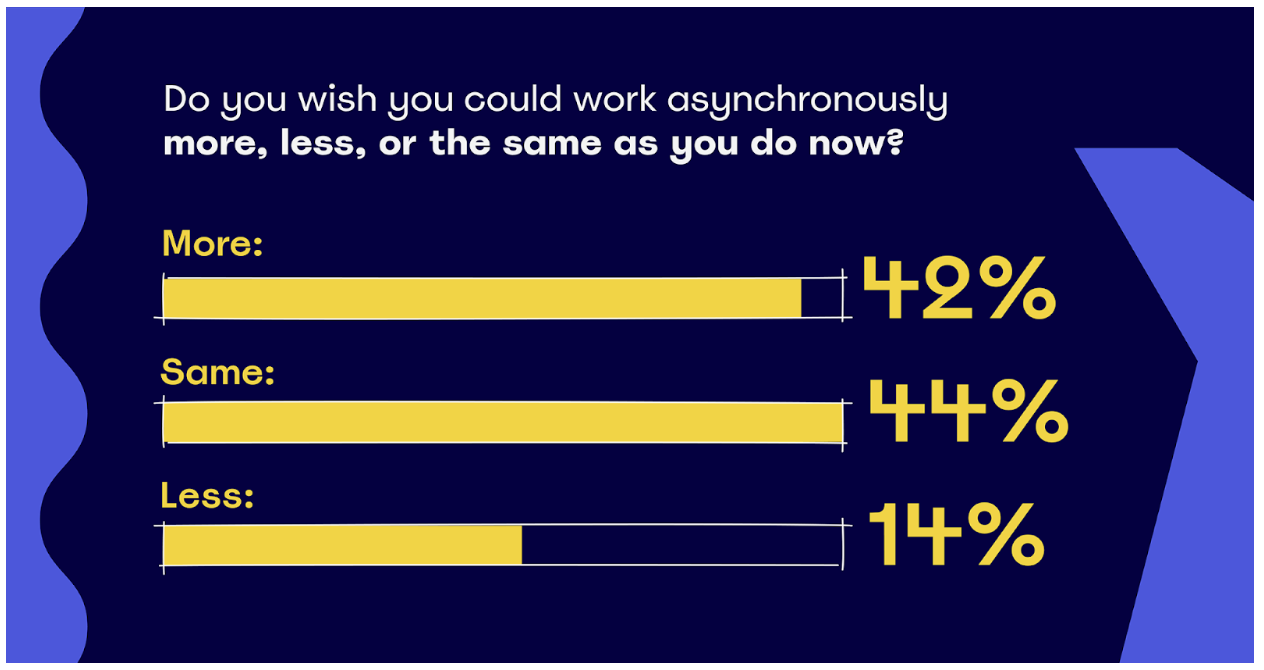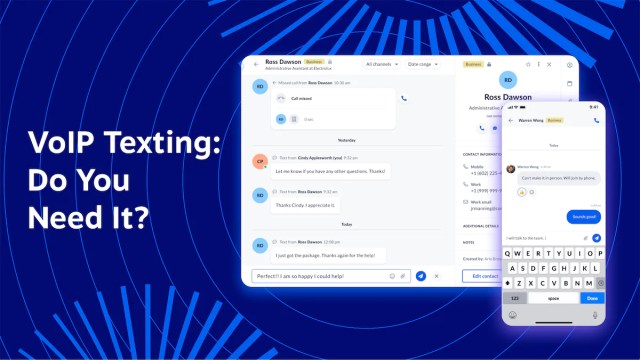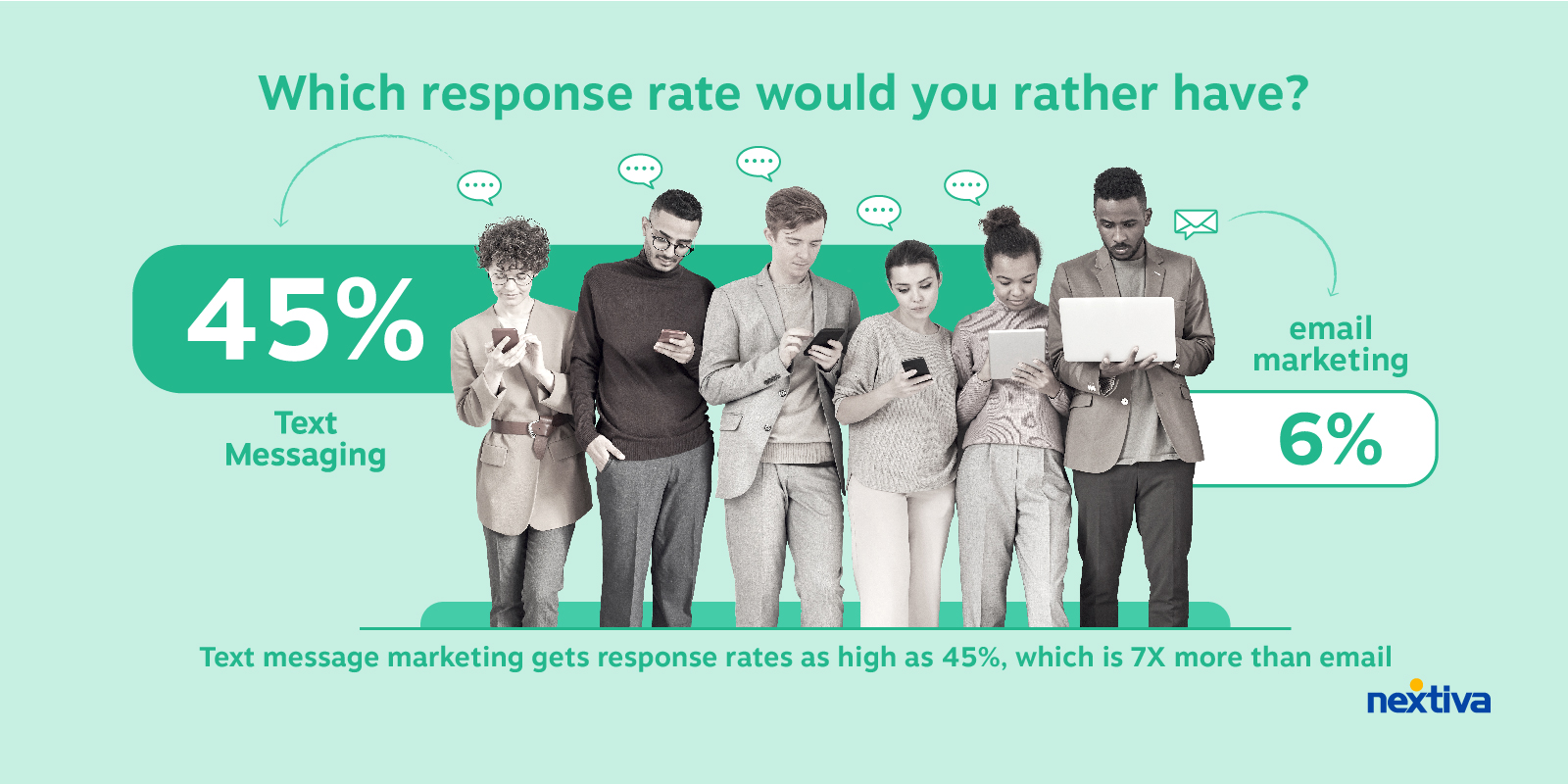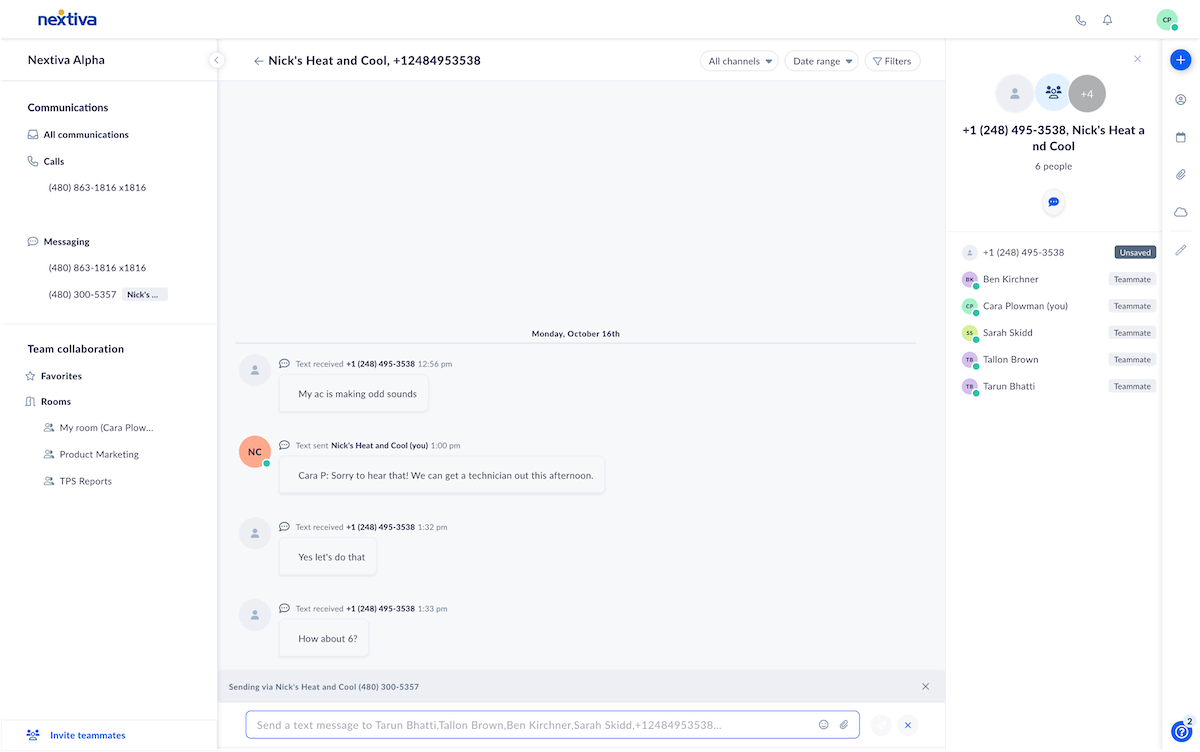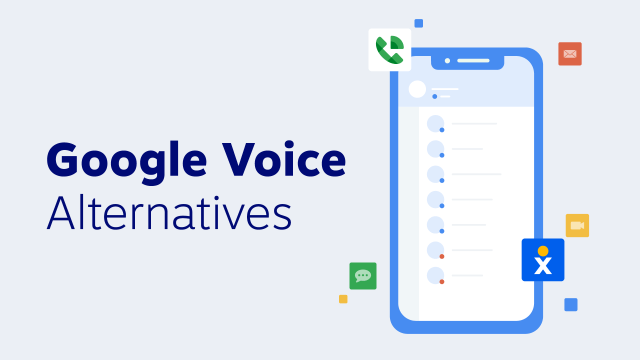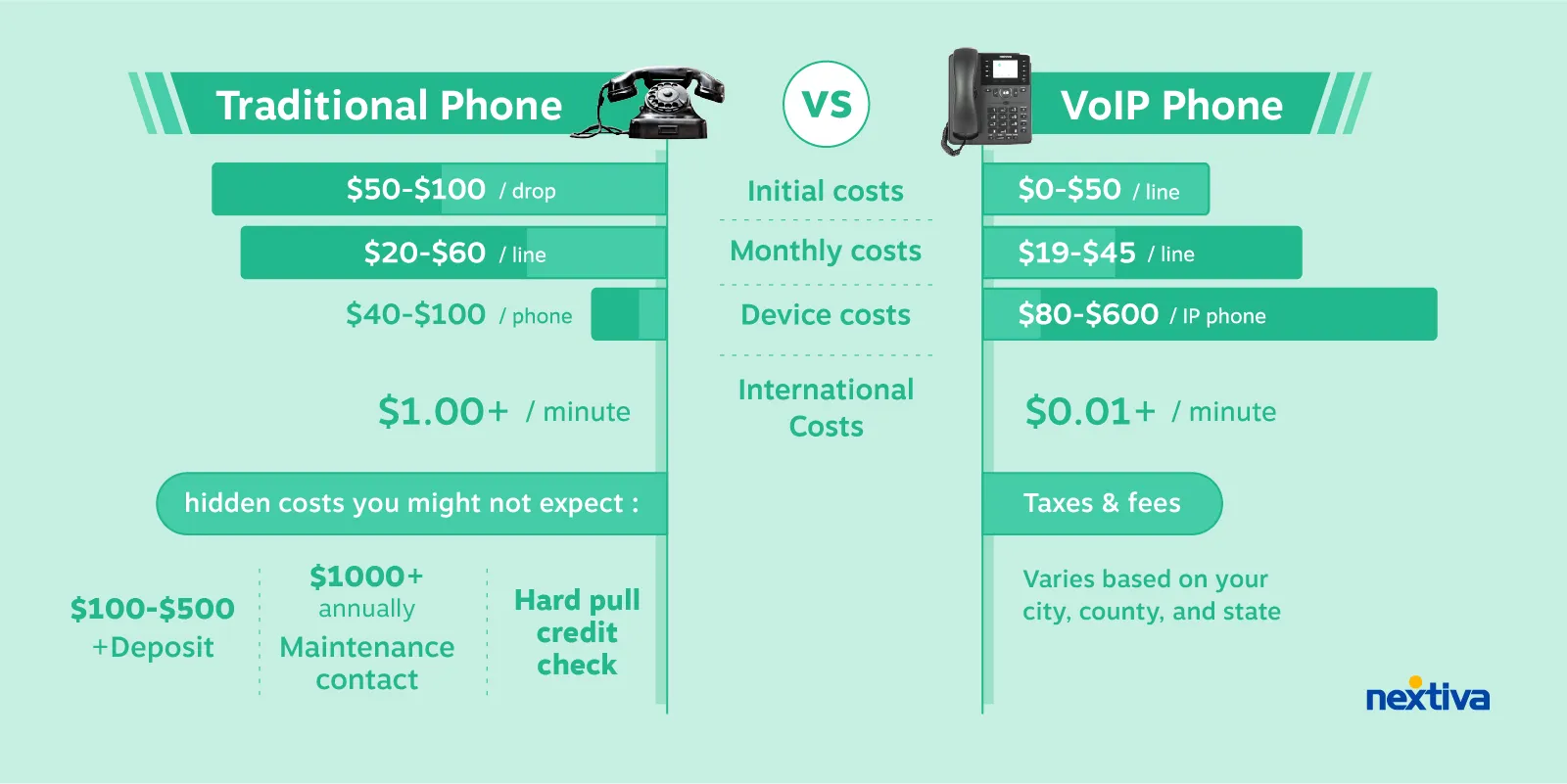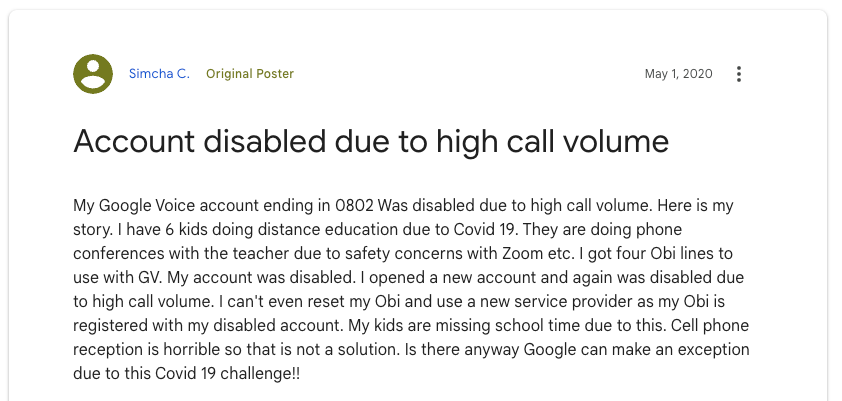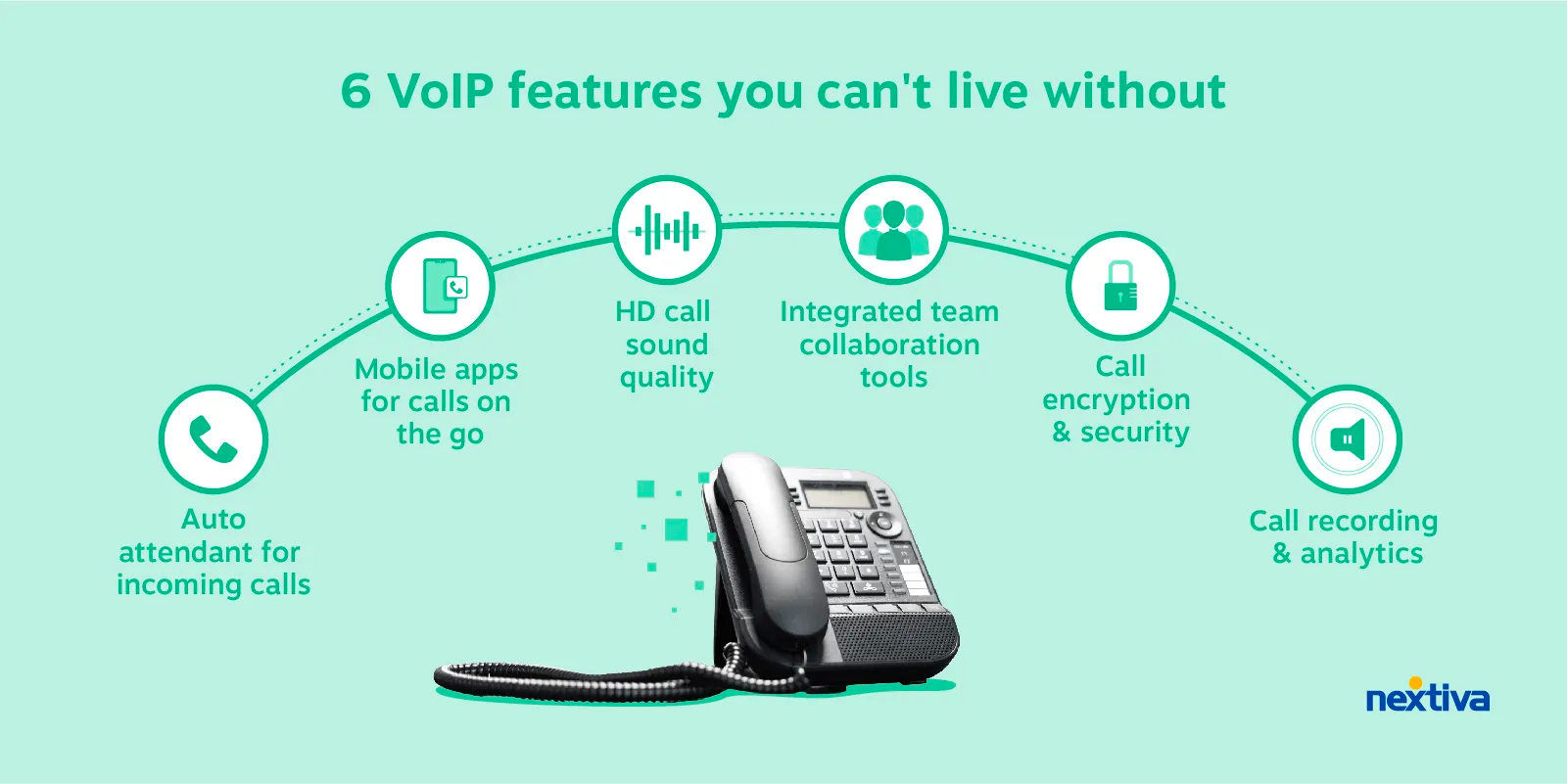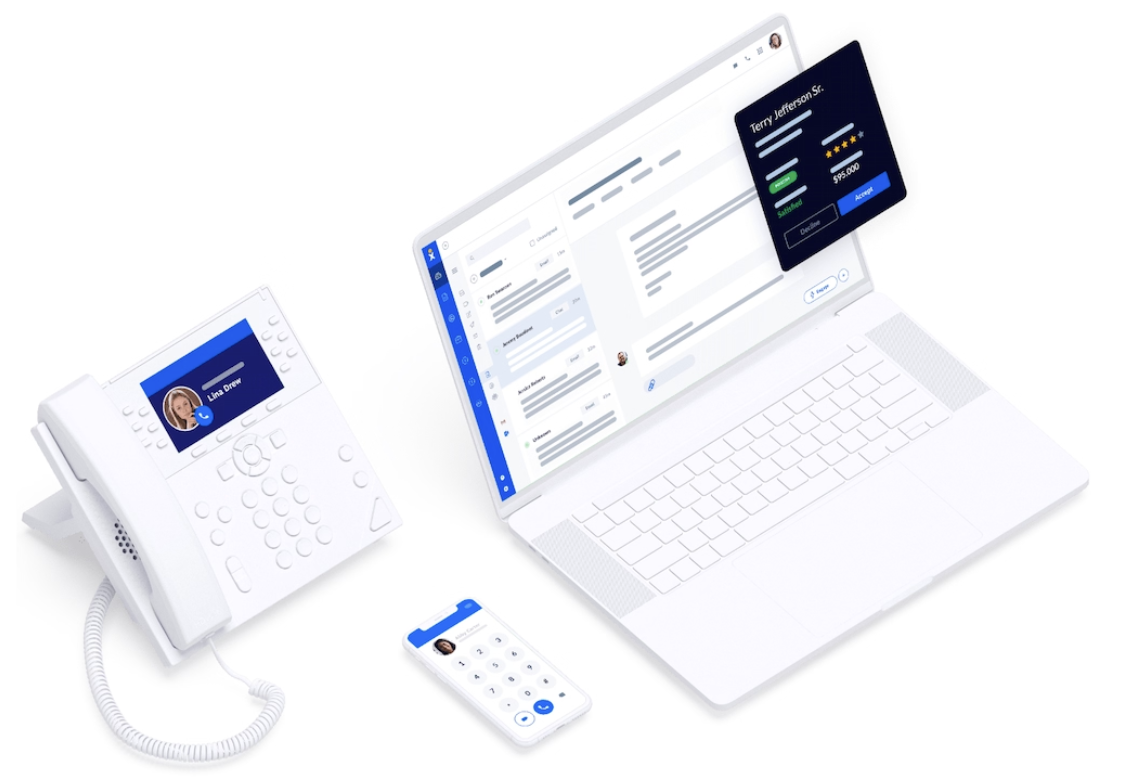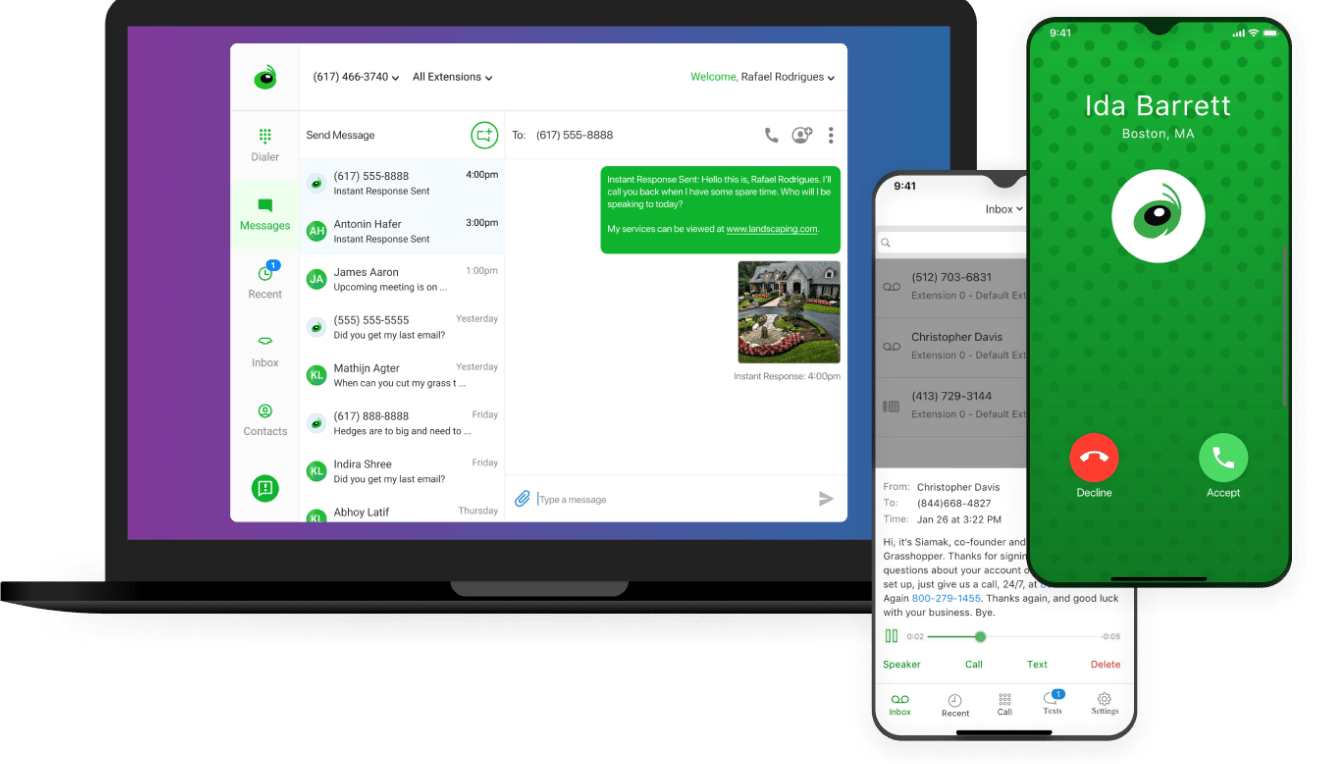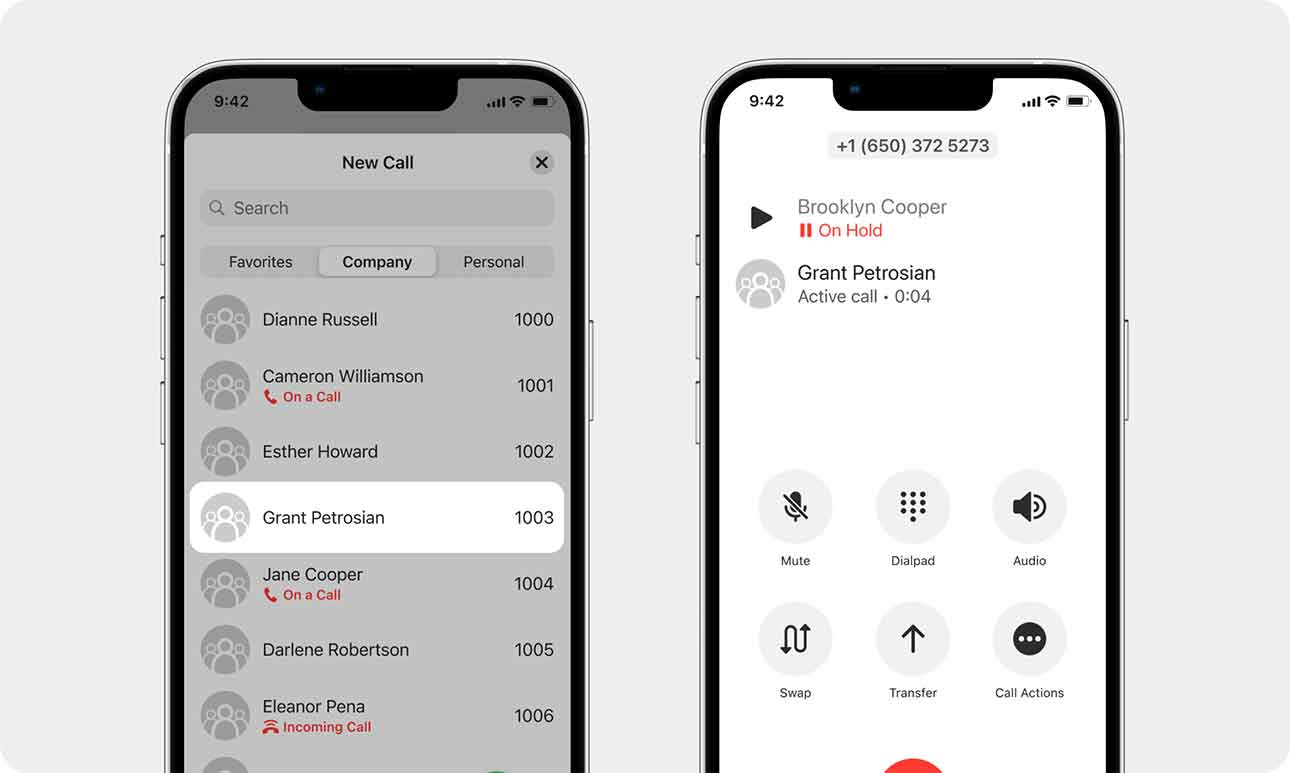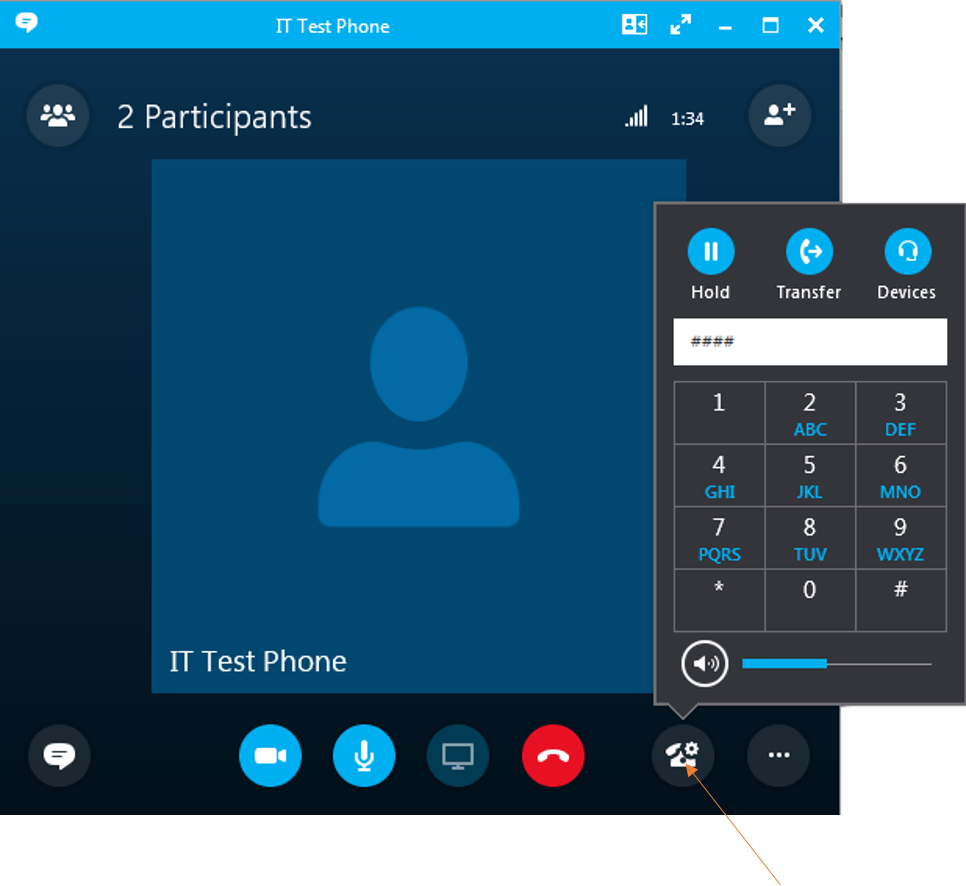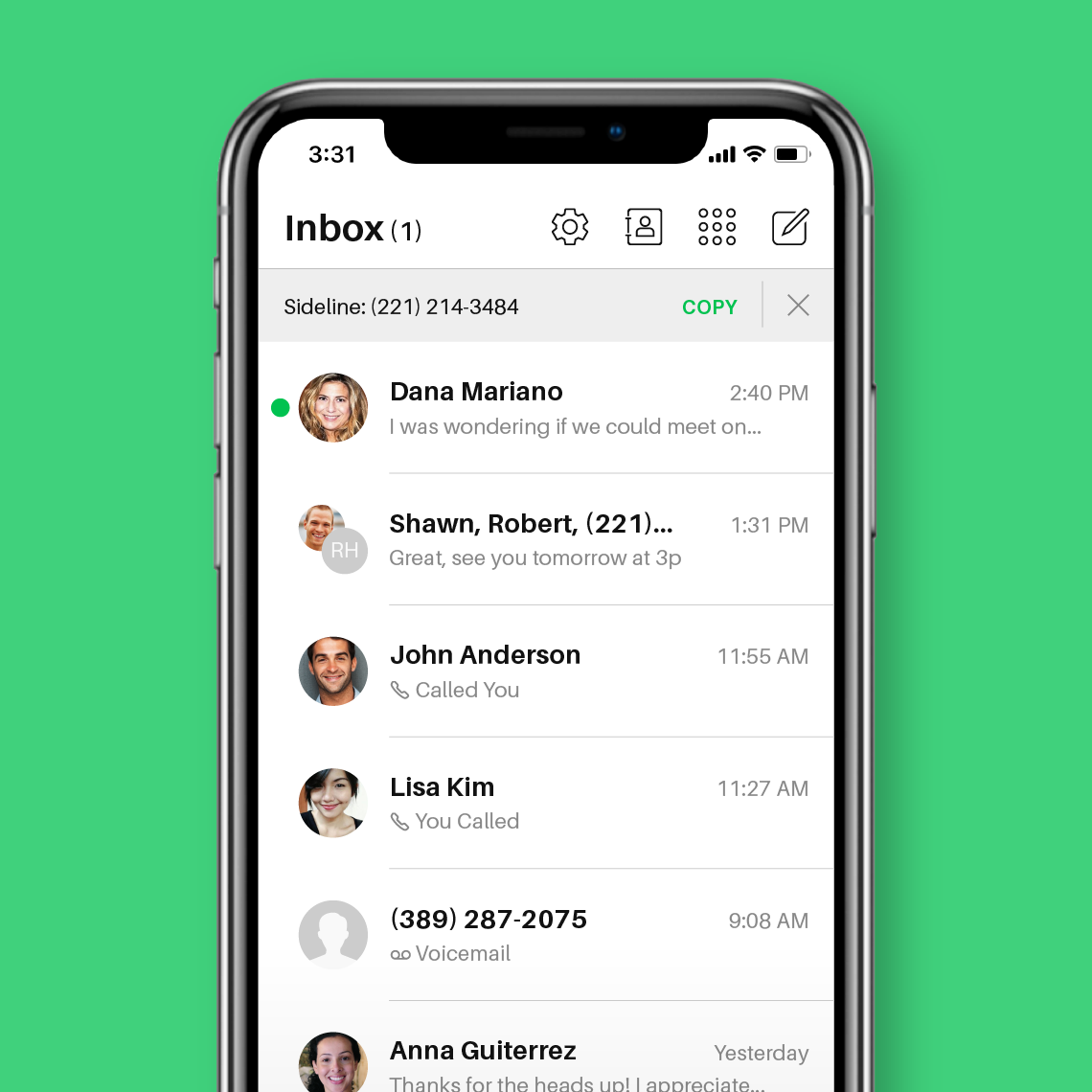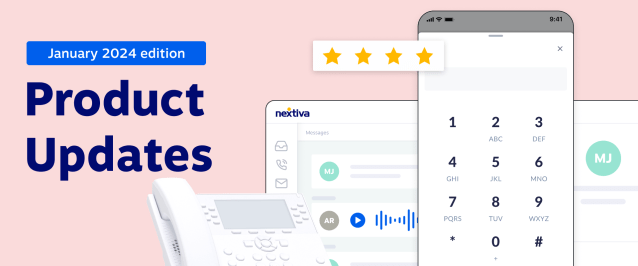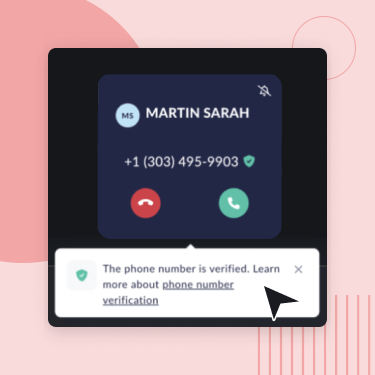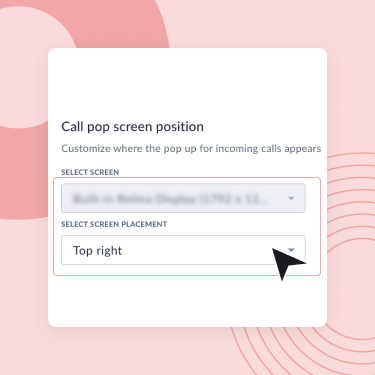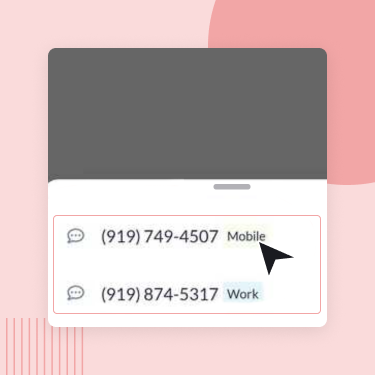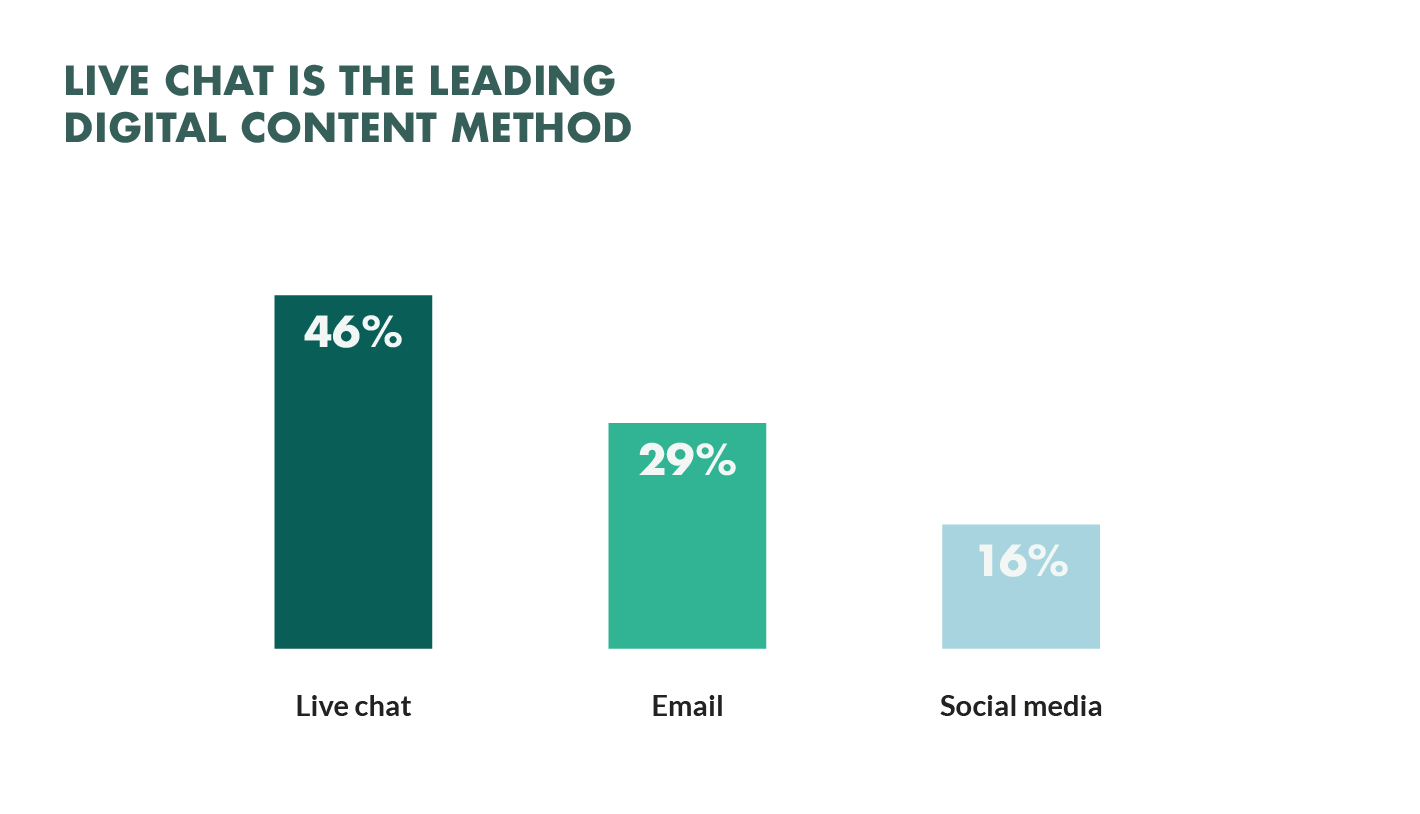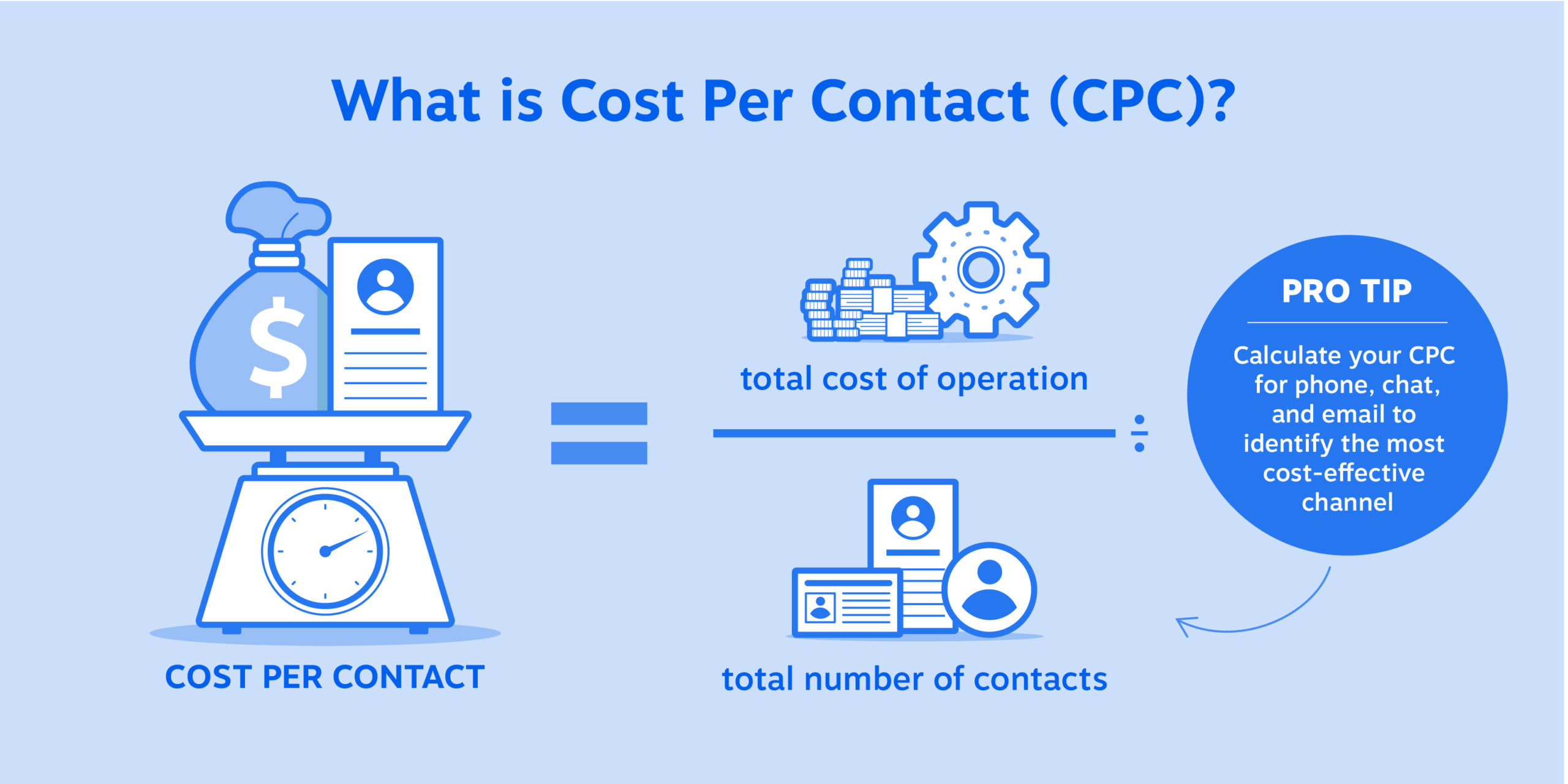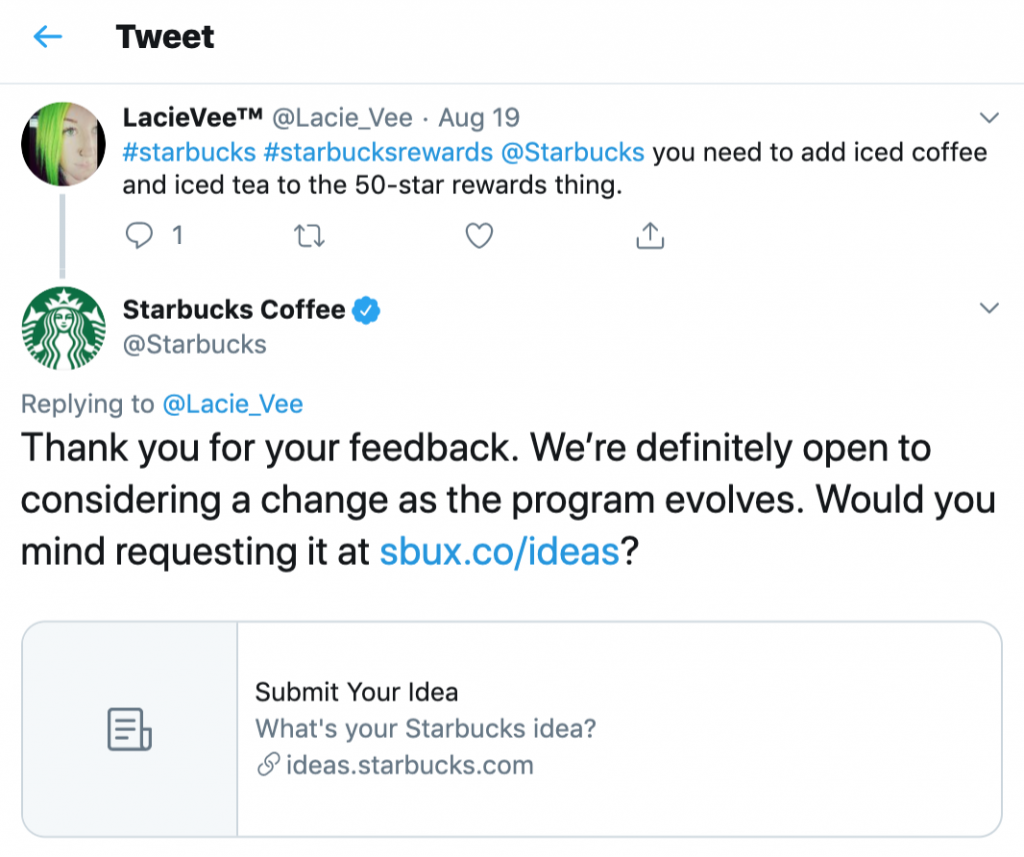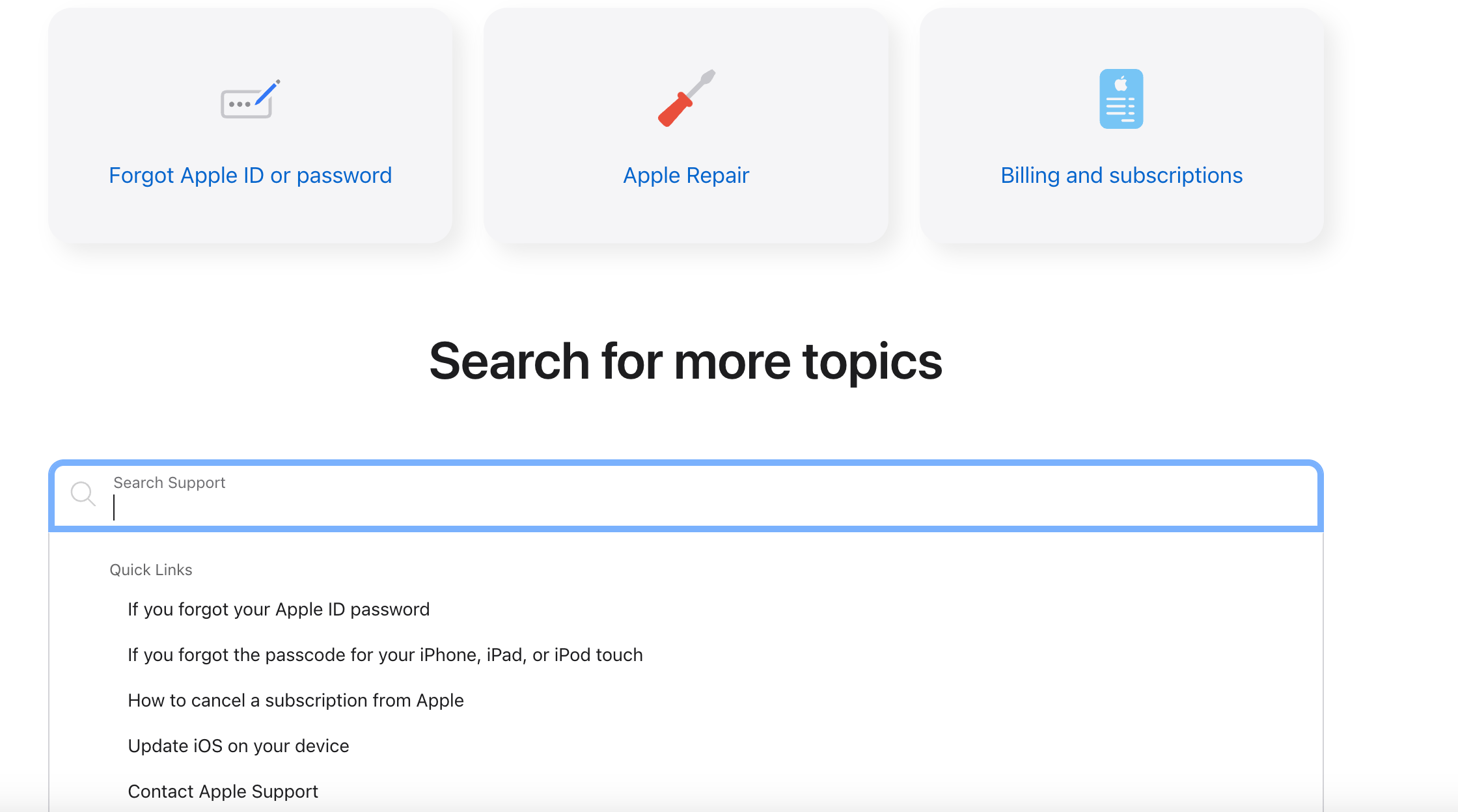Gone are the days of tangled cords and sky-high phone bills plaguing traditional landlines. You’ve entered the world of VoIP, which lets you make phone calls directly over your internet connection, offering crystal-clear calls, flexibility, and advanced features.
Think of it like sending an email instead of mailing a letter. Your voice is transformed into digital data packets, zipping across the internet to reach your customers anywhere in the world.
In this guide, we’ll explain how VoIP phone systems work and why VoIP isn’t just about saving money, it’s about reimagining communication.
What Is VoIP?
Voice over Internet Protocol (VoIP) refers to the standards that facilitate voice-based phone calls using an internet connection instead of a local telephone company.
Voice over IP converts your voice into a digital signal, compresses it, and sends it over the internet. This allows you to make calls using a broadband internet connection instead of a regular (or analog) phone line.
To use VoIP, you need:
- A broadband internet connection
- A VoIP phone service provider
- VoIP endpoints — either a VoIP phone, VoIP adapter for a regular phone, or VoIP app on your computer or mobile device
People opt for VoIP because they can make phone calls without any telephone service, which saves them on long-distance calls.
If you have internet access, you don’t need to run any extra copper wires. This lets employees work from home or telecommute to the office as well.
How Does a VoIP Phone System Work?
A VoIP phone system transforms standard phone calls into data packets that are transmitted over the internet, rather than traditional landlines or mobile networks. It works by taking the analog audio signals from your voice and converting them into digital signals sent over your high-speed internet connection.
VoIP systems bypass phone lines and use your existing internet infrastructure for making and receiving calls. The result is a flexible and cost-effective business phone solution.
Here’s a quick rundown of how VoIP works:
- Converting your voice: When you speak into a VoIP phone, microphone, or computer, your voice signal is captured and converted into a digital format using analog-to-digital conversion (ADC).
- Digital data packets: This digital data is then broken down into small packets, similar to how files are sent over the internet. These packets are tagged with information like who’s calling and who’s receiving the call.
- Traveling over the internet: The data packets then ride the waves of your internet connection and travel to the VoIP provider’s servers.
- Routing and codecs: The VoIP provider acts as a switchboard, figuring out where to send your call based on the recipient’s number. Here, specialized software called codecs may compress the data to save bandwidth and ensure smooth call quality.
- Converting back to voice: At the recipient’s end, whether it’s another VoIP device, a traditional phone, or a mobile phone, the data packets are reassembled and converted back into an analog signal using a digital-to-analog converter (DAC).
- Hearing the other person: Finally, the recipient hears your voice through their handset, speaker, or headset, and voila! You’re having a VoIP conversation.
As long as you have a high-speed internet connection, which includes a router and modem, you are ready to use VoIP.
VoIP vs. Landline — What’s the Difference
Landline phones use old Public Switched Telephone Networks (PSTN) that transmit voice calls over dedicated copper wiring.
While basic and limiting in features, landlines can offer consistent quality and uninterrupted service powered by private branch exchange (PBX) systems during outages.
However, they come with higher costs than VoIP since traditional phone systems require professional installation and dedicated infrastructure to operate.

VoIP uses modern internet infrastructure to convert voice into data packets that are transmitted flexibly across broadband connections. VoIP systems provide businesses with significant cost savings, mobility with remote access, and convenient calling features.
Call quality and reliability may vary based on the quality of your VoIP service provider and internet speed. Power outages and network jitter can also disrupt service.
VoIP problems are easy to fix with a few best practices, and choosing a reliable VoIP service helps.
VoIP is the future of telecommunications and a better choice than landlines any day (despite a few challenges).
| Feature | Landline | VoIP |
|---|---|---|
| Technology | Physical wires | Internet |
| Cost | Typically more expensive | Often cheaper |
| Features | Basic | More advanced |
| Reliability | More reliable | Can be affected by internet |
| Mobility | Limited | Flexible |
Types of VoIP Technologies + How They Work
Hosted VoIP for business
A hosted VoIP phone system consists of many devices, including smartphones, to provide unified business communication. This is packed into a cloud phone system or a “cloud PBX.”
Administrators can manage the permissions and features for each employee along with more sophisticated VoIP features with an online interface.
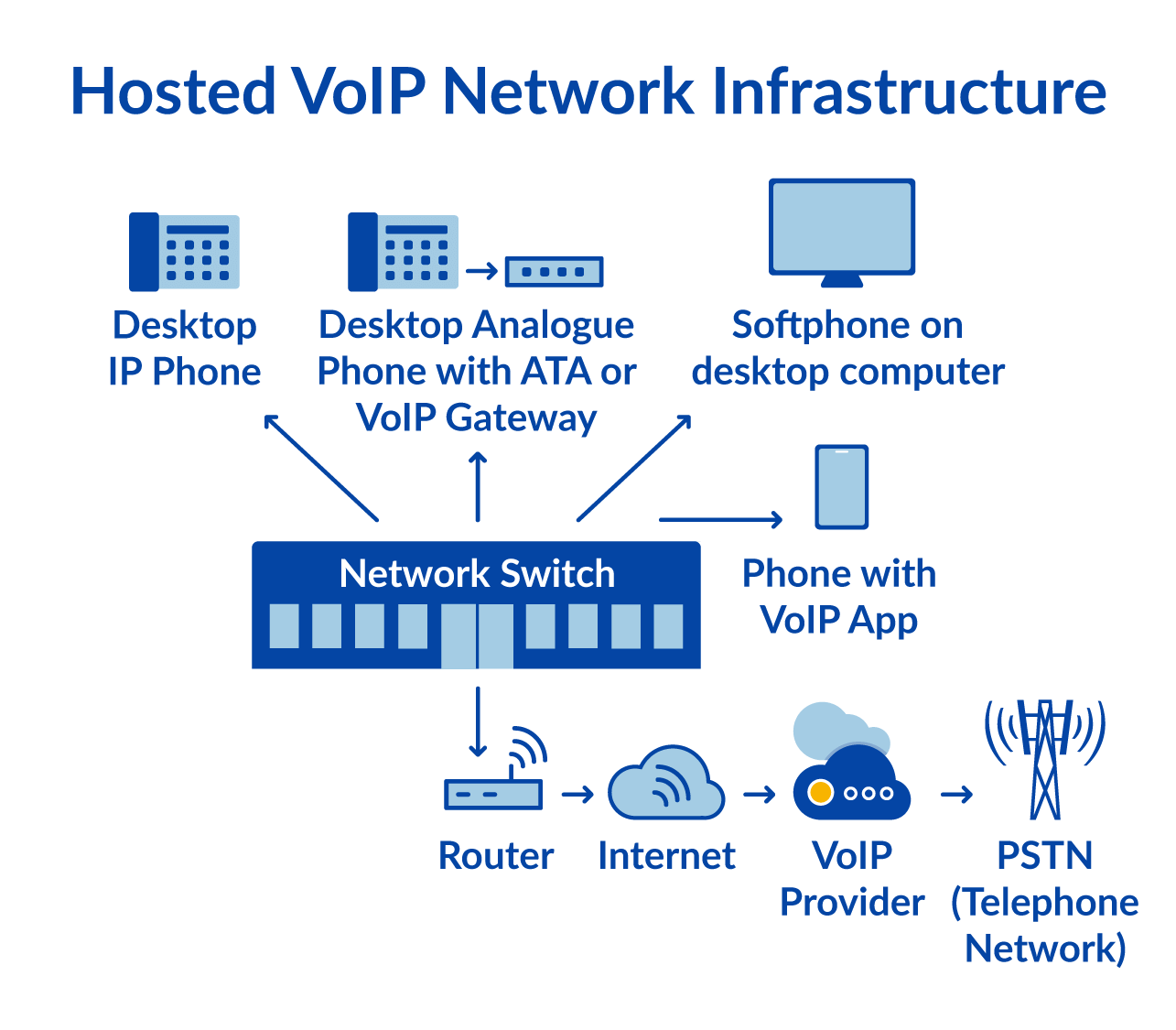
When an employee calls a customer, they pick up the handset and dial them just as they normally would. The IP phone (or app) travels through your Local Area Network (LAN) switch and business router before reaching the VoIP service provider. From there, the VoIP provider establishes the call.
If the network path to the called party supports a digital voice signal, then the call quality is upgraded to high definition. Otherwise, a VoIP provider connects the call over the Public Switched Telephone Network.
Using a hosted VoIP system in your business is that simple. However, for established businesses with a more sophisticated phone system, there are different needs.
If the office uses a PBX, you probably also pay for trunked telephone lines. These trunked lines handle voice calls from the PBX to the phone company — and they’re not cheap!
SIP trunking for PBX phone systems
In some cases, companies are locked into their hybrid phone system due to the costs of replacing hardwired phone lines in every office. Since VoIP uses the Session Initiation Protocol, it can be used to establish multiple lines of calls through the internet.
You’ll see in the diagram below SIP trunks accept calls from the VoIP provider. Inbound and outbound calls are funneled in much the same way until they reach the business location and are hardwired into a PBX.

Like old-school analog circuit switches, the “trunk” acts as a switch to control and funnel data.
The most significant benefit for large and small businesses alike is if they have a hardwired telephone system on site. SIP Trunking allows you to mix analog phone systems and new VoIP solutions to eliminate redundancy.
SIP Trunking provides multiple channels of voice service on-demand for any IP-based PBX.
A SIP Trunk can either be metered or unmetered for $15–$25 each month. They aren’t too hard to set up, either. Simply provide the SIP username and password to your PBX.
Mobile devices & Wi-Fi connectivity
Thanks to the meteoric rise of mobile devices in the workplace, unified communication is a requirement.
Employees are no longer tethered to their desks. Road warriors and remote staff can take business calls using nothing more than a VoIP app for their smartphones.
In some offices, Ethernet might not be a practical option. The speed of Wi-Fi has improved substantially, which has made way for Wi-Fi calling.
Keep an eye on your network congestion bandwidth utilization. You might need to adjust a few network settings for optimal performance.
📚 Also Read our VoIP Troubleshooting Guide to address these issues once and for all.
Top VoIP Phone Features
In addition to some serious cost savings, extensive phone features are another important motivation why so many companies switch to VoIP.
Here are the top features offered in a VoIP phone system:
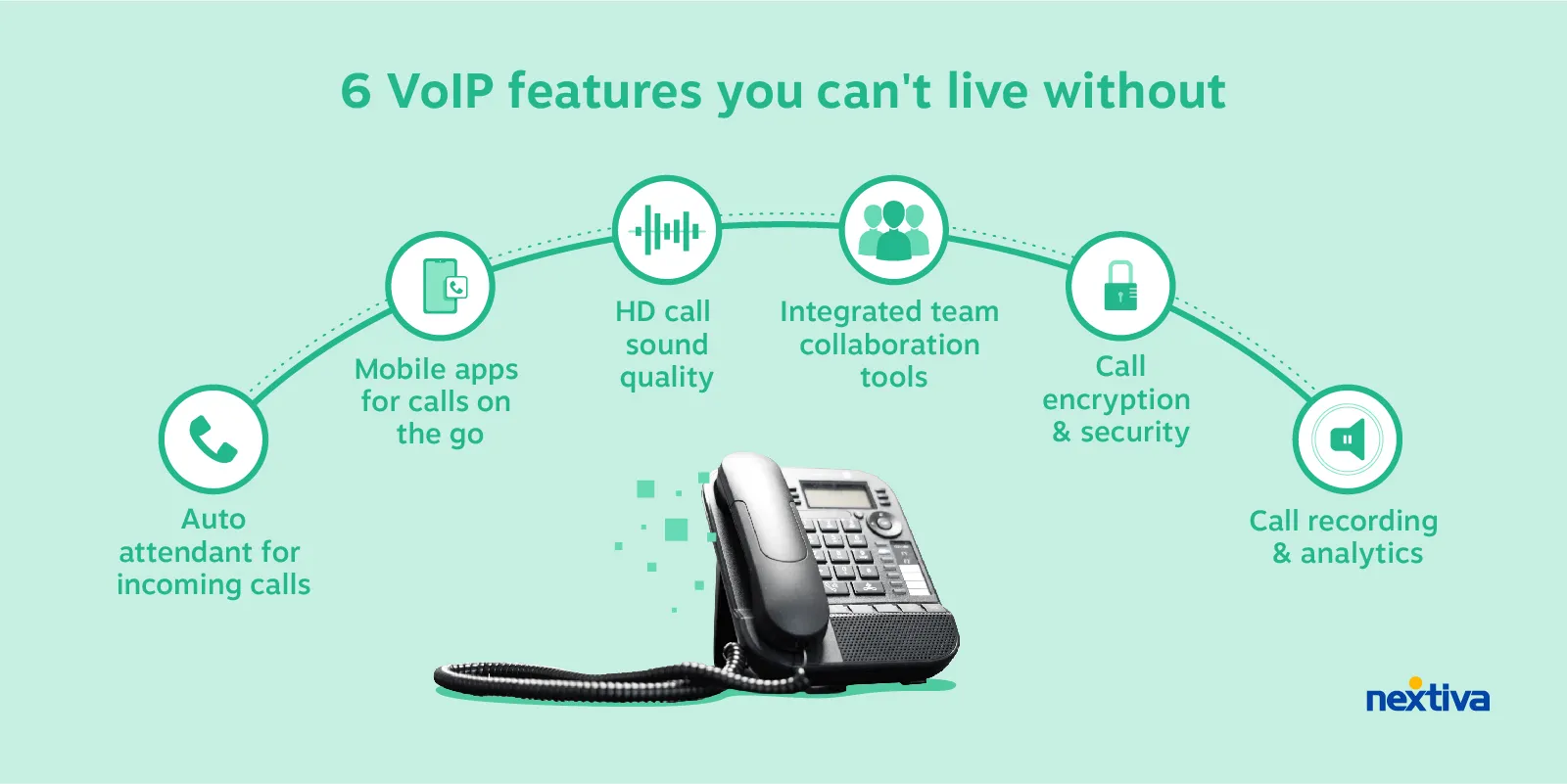
Related: 40+ Best VoIP Features Your Small Business Can’t Do Without
📞 Call management:
- Automatic Call Distribution (ACD): Routes calls to available agents based on pre-defined criteria, ensuring efficient handling and faster response times.
- Interactive Voice Response (IVR): Guides callers through automated menus, reducing wait times and directing them to the right resource.
- Call Recording and Analytics: Records calls for training, quality assurance, and dispute resolution. Analytics provide insights into call patterns and agent performance.
- Whisper Coaching: Allows supervisors to privately coach agents during live calls, enhancing training and customer satisfaction.
🤝 Collaboration and mobility:
- Video Conferencing: Connect with colleagues or clients face-to-face seamlessly, regardless of location.
- Voicemail-to-Email: Get voicemail messages delivered to your inbox. Listen to voicemails and respond through your email.
- Softphones: Make and receive calls from any device with an internet connection, fostering remote work flexibility.
- Real-Time Presence: See who’s available to receive calls and chat messages. Live status updates are accurate and straightforward.
- Click-to-call: Initiate calls directly from web pages or CRM systems, streamlining workflow and improving sales outreach.
🖇 Integration and customization:
- CRM integration: Synchronizes call data with CRM software, providing a complete view of customer interactions.
- Instant Messaging: Send and receive text messages with customers. Perfect for quick updates and appointment reminders.
- Custom Dial Plans: Configure call routing based on specific needs, like routing international calls to designated lines.
- API Access: Developers can integrate VoIP functionalities into custom applications and software.
Related: What Is a Contact Center? Definition, Features, and Uses
Key Benefits of Using VoIP
VoIP offers businesses a reliable phone service, and it doesn’t cost you all that much.
Here are some of the top benefits of switching to VoIP:
1. Cost savings
VoIP can substantially reduce phone bills compared to traditional landline systems. VoIP calls are made over the internet, so there are no per-minute charges.
International calls are also much cheaper for VoIP. These savings add up, potentially cutting phone bills in half each month.
2. Flexibility
With VoIP, businesses can host their phone system in the cloud instead of needing bulky on-site hardware. This allows employees the flexibility to make or receive calls from anywhere with an internet connection. Calls can be forwarded to cell phones or remote locations.
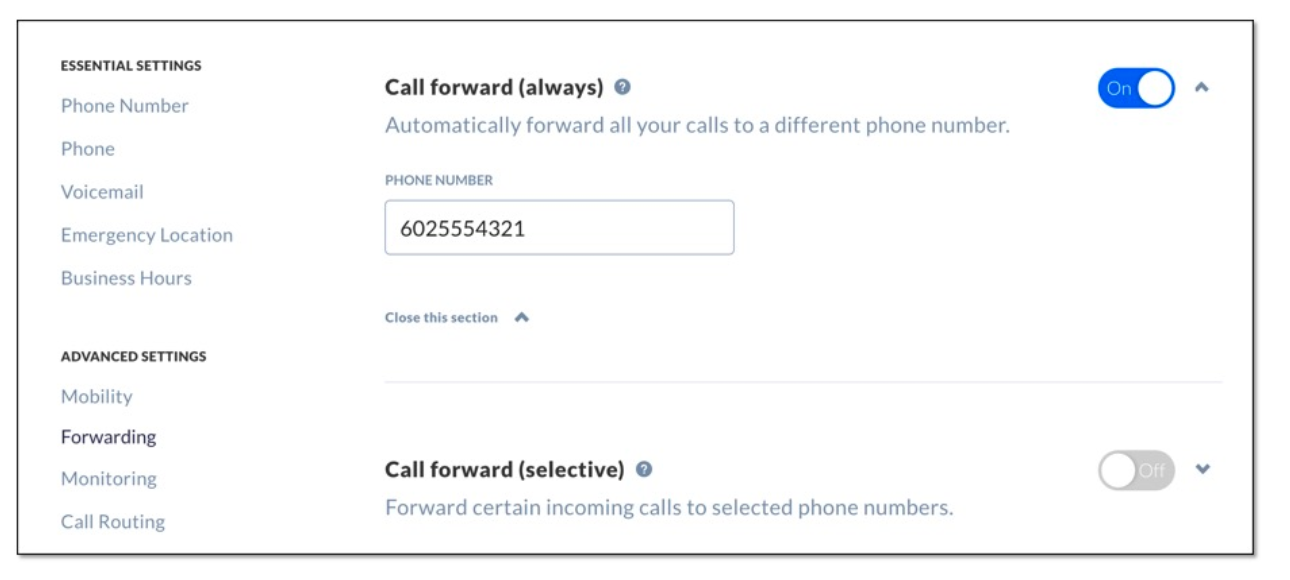
3. Advanced features
VoIP includes a full suite of advanced calling features like auto-attendant, find me/follow me call routing, call recording, voicemail sent to email, conference calling, and more.
4. Scalability
Cloud phone service scale seamlessly as a business grows. It’s easy to add extensions or lines at your office or remote locations. This helps facilitate opening new locations or allowing more employees to work from home.
5. Better call management & analytics
VoIP systems provide excellent data around call volume, times of day, call distribution, and patterns. This helps businesses understand higher traffic times so they can better staff to meet customer needs.
Analytics provide insight to improve operations.
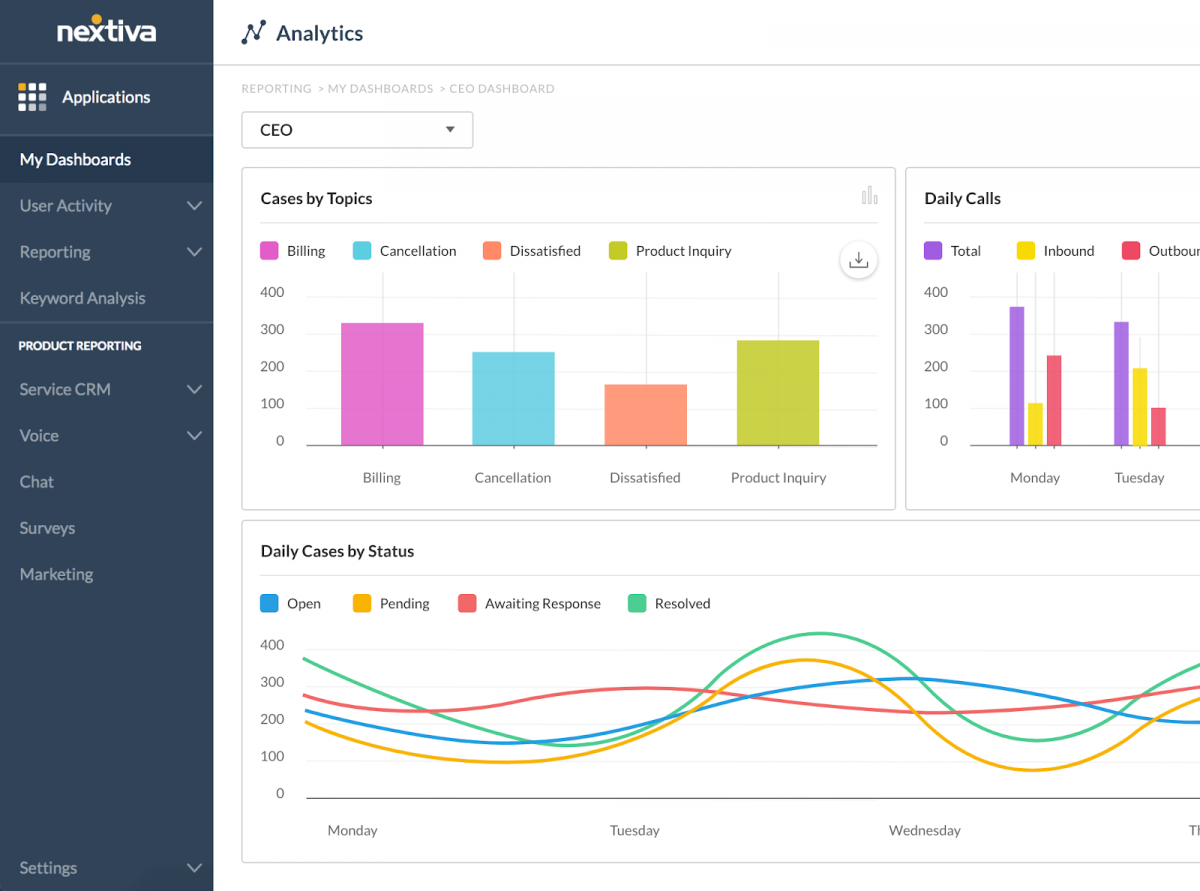
VoIP Phone System Requirements
Thinking about setting up a VoIP phone system in your business? Here’s all the equipment you’ll need to make sure your business is ready.
☎️ Hardware
Modem and router: These are the gateways to the internet, allowing your VoIP system to send and receive data. Choose a reliable modem and router that can handle your call volume and internet usage.
SIP Phones: All VoIP phones are SIP phones and vice-versa. They establish calls by using a VoIP service provider. Nextiva offers a wide variety of VoIP desk phones that offer a ton of functionality for both small businesses and enterprises.
Softphones: If you don’t need a traditional telephone, you can just download a softphone to make VoIP calls using your cellphone, laptop, or desktop. These VoIP applications keep your Caller ID separate because the voice data is handled directly through your VoIP provider.
Headsets: These are optional but highly recommended for hands-free calling and improved audio quality. Choose comfortable headsets with good noise cancellation if your environment is noisy.
Analog Telephone Adapters (Optional): For the holdouts of analog phones, never fear. With an ATA, you can retrofit your phones so they function correctly over VoIP. They might not have all the conferencing capabilities available, but they offer reliable service.
🌐 Internet connection
A good internet connection is crucial for VoIP call quality. Aim for a minimum of 100 Mbps download and upload speeds for optimal performance. Consider fiber optic internet for the most reliable connection.
Bandwidth
VoIP calls require less bandwidth than streaming video, but you still need enough to handle your call volume without choppiness or dropped calls.
Calculate your required bandwidth based on the number of simultaneous calls you expect and your internet service provider’s (ISP) recommendations. The standard bandwidth required for VoIP is 100 Kbps per device.
👉 Check your connection quality with our free VoIP speed test.
📲 Software
VoIP service provider: Choose a reputable VoIP phone service that offers the features you need, such as call forwarding, voicemail, and auto attendants.
Provisioning software: Your VoIP service provider will likely provide software to provision your phones and configure your system.
Selecting the Right VoIP Phone System
Choosing the right business VoIP is critical to maintaining a high standard of business communications and operations.
Beyond just comparing technical features, you want a reliable partner that offers a smooth setup, quality ongoing support, and financial stability to provide a communication system for years to come.
Key factors to evaluate in your VoIP buying decision include:
- Total costs — both initial investment and ongoing monthly fees
- Network uptime and call quality guarantees
- Depth of customer support and training resources
- Company track record and financial standing
- Ease-of-use — simple interfaces and tools
- Customer satisfaction — reviews and case studies
A business phone system like Nextiva meets and exceeds these criteria. U.S. News awarded Nextiva the #2 spot in their 2024 Best Business Phone Systems rankings, praising its scalability and seamless integration with popular business applications.
“Nextiva empowers businesses to streamline communication, improve customer interactions, and boost employee productivity.”
Lauren Swift
When you choose Nextiva, you choose a reliable partner that helps you seamlessly transition to VoIP and helps you navigate all your communication issues along the way.
Related: What Is a Virtual Phone System & How Does It Work?
Change how you call.
Get a VoIP service with Nextiva.
FAQs about VoIP
To use your existing analog phone with VoIP, use an Analog Telephone Adapter (ATA). It retrofits existing phones with more features and capabilities. In many cases, it may be more desirable to use a SIP phone because of its native functionality to work with VoIP services.
A VoIP phone system costs between $20 and $40 monthly per line. Depending on the number of users, commitment, and features, your costs could be less. A decent IP phone starts at $70, but they can also be leased for as low as a few dollars each month.
The total cost of a VoIP phone system should factor in phones, accessories, service, and any one-time setup costs. Nextiva doesn’t charge any setup or activation fees and includes free porting and setup of your business telephone number.
— Ensure Sufficient Internet Bandwidth – Conduct Internet speed tests regularly and upgrade your bandwidth if needed, especially before adding more VoIP phones or lines. Slow internet and latency are the number one cause of choppy VoIP calls, echoes, and disconnects.
— Use a Power Conditioner – The best power conditioners and UPS backups will regulate power spikes and fluctuations to your VoIP network equipment to prevent crashes or sound anomalies during calls.
— Enable QoS on Your Router – Quality of Service (QoS) settings give high priority to VoIP data packets on your network. This prevents other bandwidth activities like large file downloads or video streaming from disrupting your calls.
— Keep Firmware Updated – Updating router and IP phone firmware provides under-the-hood optimizations, and security improvements and ensures feature compatibility. This prevents bugs or vulnerabilities from creating issues.




![Best Business Text Messaging Apps for 2024 [Free & Paid]](https://www.nextiva.com/blog/wp-content/uploads/sites/2/2023/08/Business-Text-Messaging-Tools.jpg?w=640)

